



Source: United States Holocaust Memorial Museum
Between 1941 and 1945, Nazi Germany and its collaborators systematically murdered some six million Jews across German-occupied Europe, around two-thirds of Europe's Jewish population. This came to be known as the Holocaust. Alongside Jews, approximately five million other prisoners of war were murdered in the concentration camps. It remains one of the worst atrocities our world has ever seen. Read through the resources below to learn more.
In the course of the Second World War, the Nazis murdered nearly six million European Jews. This genocide is called the Holocaust. Here, you can read about its causes and backgrounds, the stages of the Holocaust, and the perpetrators.
The Holocaust was the systematic, state-sponsored persecution and murder of six million European Jews by the Nazi German regime and its allies and collaborators. The Holocaust was an evolving process that took place throughout Europe between 1933 and 1945. Read through this website to learn more.
The Holocaust was Nazi Germany’s deliberate, organised, state-sponsored persecution and machinelike murder of approximately six million European Jews and at least five million prisoners of war, Romany, Jehovah’s Witnesses, homosexuals, and other victims. Read through this website to learn more.
Let the survivors be your guide on this unique tour of the Jewish Holocaust Centre Museum. They have carefully curated 34 embedded items in the tour for you to click on and explore. This allows you to learn more about the survivors and their experience of the Holocaust.
Explore the events that led to the systematic murder of six million Jews and millions of other innocent victims. Discover the stories of survivors, witnesses, and rescuers that raise essential questions about the nature of human behaviour.
This website directs you to numerous articles about some of the many questions you might have about the Holocaust.
The Holocaust was the systematic murder of Europe's Jews by the Nazis and their collaborators during the Second World War. This programme of targeted mass murder was a central part of the Nazis’ broader plans to create a new world order based on their ideology. Read through this website to learn more.
JewishGen's Holocaust Database is a collection of databases containing information about Holocaust victims and survivors. It contains more than 3.79 million records, from more than 400 component datasets.
A ghetto is a place where groups of people are kept forcibly segregated from others. The Nazis used ghettos to isolate and contain the Jewish population of occupied Europe. This section explores when the Nazis began using ghettos, the different types of ghettos, how the ghettos were run, and what life was like for those imprisoned in them.
The Nazis occupied Warsaw on 29 September 1939, four weeks after invading Poland. The Jewish population in Warsaw had grown following orders from Heydrich to concentrate Jews in cities and towns, but a ghetto was not decreed until 12 October 1940. The ghetto was segregated from the rest of the population by a wall and sealed on 15 November 1940. Jewish policemen guarded the inside of the wall, and Nazi and Polish officers patrolled the outside. Only those with special permits could leave the ghetto. Over 400,000 people were imprisoned. Read through this website to learn more.
The Nazis used camps as a form of persecution , torture and control throughout their time in power. This section will give an overview of what the different types of camps were, when they were set up, how they operated and what life was like for those incarcerated inside.
This website has excellent links and resources to help you with your research into the Holocaust.
The Nazis used a variety of camps throughout their time in power to persecute, control and, eventually, murder their opponents. This section will explain the different types of camps used at different points by the Nazis.
Between 1933 and 1945, the Nazi regime and their collaborators murdered six million European Jews and five million non-Jews. Read through this article to learn more.
In 1944 and 1945, Allied forces liberated thousands of people from Nazi incarceration as they advanced towards Berlin. On 7 May 1945, Nazi Germany surrendered and the Second World War was over. Although the war had ended, for survivors, and Europe more widely, the process of reconstruction was just beginning.
This section will explore the difficulties survivors of the Holocaust faced as they attempted to reconstruct their lives: Displaced Person’s (DPs) camps, the denazification process, the postwar trials of Nazis and their collaborators, and how the Holocaust has been remembered and memorialised.
Despite the repression of their opponents, resistance to the Nazis occurred throughout their time in power. This resistance manifested in different ways. Some people joined organised groups of resistance, some participated in armed uprisings, some refused to do the Hitler salute, and others produced secret writings condemning the regime.
This section will discuss and give examples of resistance, opposition and non-conformity, starting with organised and more risky examples of resistance.
The Wiener Holocaust Library is one of the world’s leading and most extensive archives on the Holocaust, the Nazi era and genocide. The Library’s unique collection of over one million items includes published and unpublished works, press cuttings, photographs and eyewitness testimony.


The German text reads: “I declare herewith under oath that in the years 1941-1943 during my tenure in office as commandant of Auschwitz Concentration Camp 2 million Jews were put to death by gassing and a 1/2 million by other means. Rudolf Hoess. May 14, 1946." The confession is also signed by Josef Maier of the US Chief of Counsel's office.

Jewish men are arrested by the SS during Kristallnacht in Baden-Baden, Germany, and forced to march through the streets to a nearby synagogue to see it destroyed.

Mass scene of Jews arriving after an arduous journey. Here they would face the selection process, which ended for many in the crematorium that can be seen in the background.
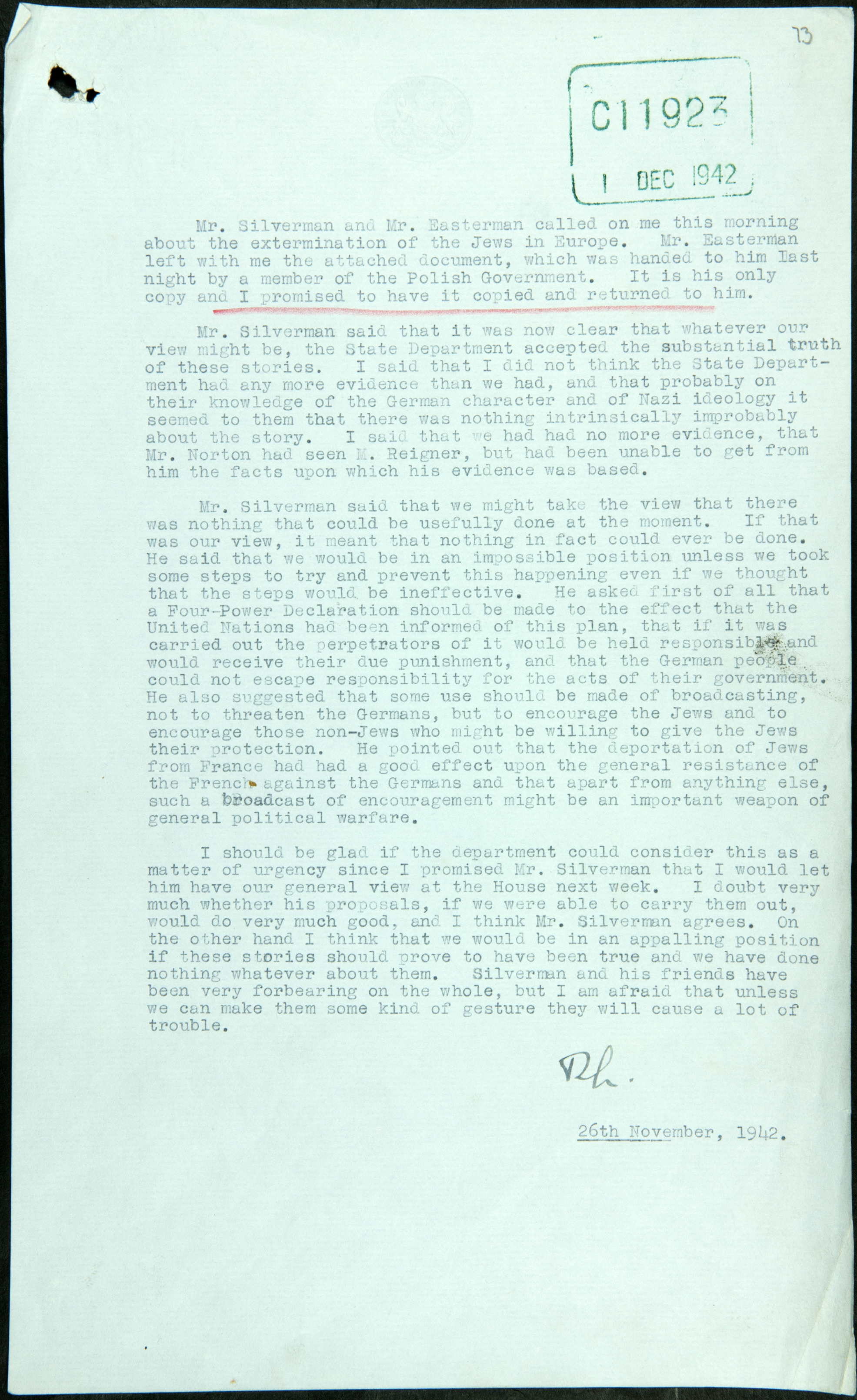
Mr. Silverman and Mr. Easterman called on me this morning about the extermination of the Jews in Europe. Mr. Easterman left with me the attached document, which was handed to him last night by a member of the Polish Government. It is his only copy and I promised to have it copied and returned to him.
Mr. Silverman said that it was now clear that whatever our view might be, the State Department accepted the substantial truth of these stories. I said that I did not think the State Department had any more evidence than we had, and that probably on their knowledge of the German character and of Nazi ideology it seemed to them that there was nothing intrinsically improbably [sic] about the story. I said that we had had no more evidence, that Mr. Norton had seen M. Reigner, but had been unable to get from him the facts upon which his evidence was based.
Mr. Silverman said that we might take the view that there was nothing that could be usefully done at the moment. If that was our view, it meant that nothing in fact could ever be done. He said that we would be in an impossible position unless we took some steps to try and prevent this happening even if we thought that the steps would be ineffective. He asked first of all that a Four-Power Declaration should be made to the effect that the United Nations had been informed of this plan, that if it was carried out the perpetrators of it would be held responsible and would receive their due punishment, and that the German people could not escape responsibility for the acts of their government. He also suggested that some use should be made of broadcasting, not to threaten the Germans, but to encourage the Jews and to encourage those non-Jews who might be willing to give the Jews their protection. He pointed out that the deportation of Jews from France had had a good effect upon the general resistance of the French against the Germans and that apart from anything else, such a broadcast of encouragement might be an important weapon of general political warfare.
I should be glad if the department could consider this as a matter of urgency since I promised Mr. Silverman that I would let him have our general view at the House next week. I doubt very much whether his proposals, if we were able to carry them out, would do very much good, and I think Mr. Silverman agrees. On the other hand I think that we would be in an appaling position if these stories should prove to have been true and we have done nothing about them. Silverman and his friends have been very forbearing on the whole, but I am afraid that unless we can make them some kind of gesture they will cause a lot of trouble.
26th November, 1942
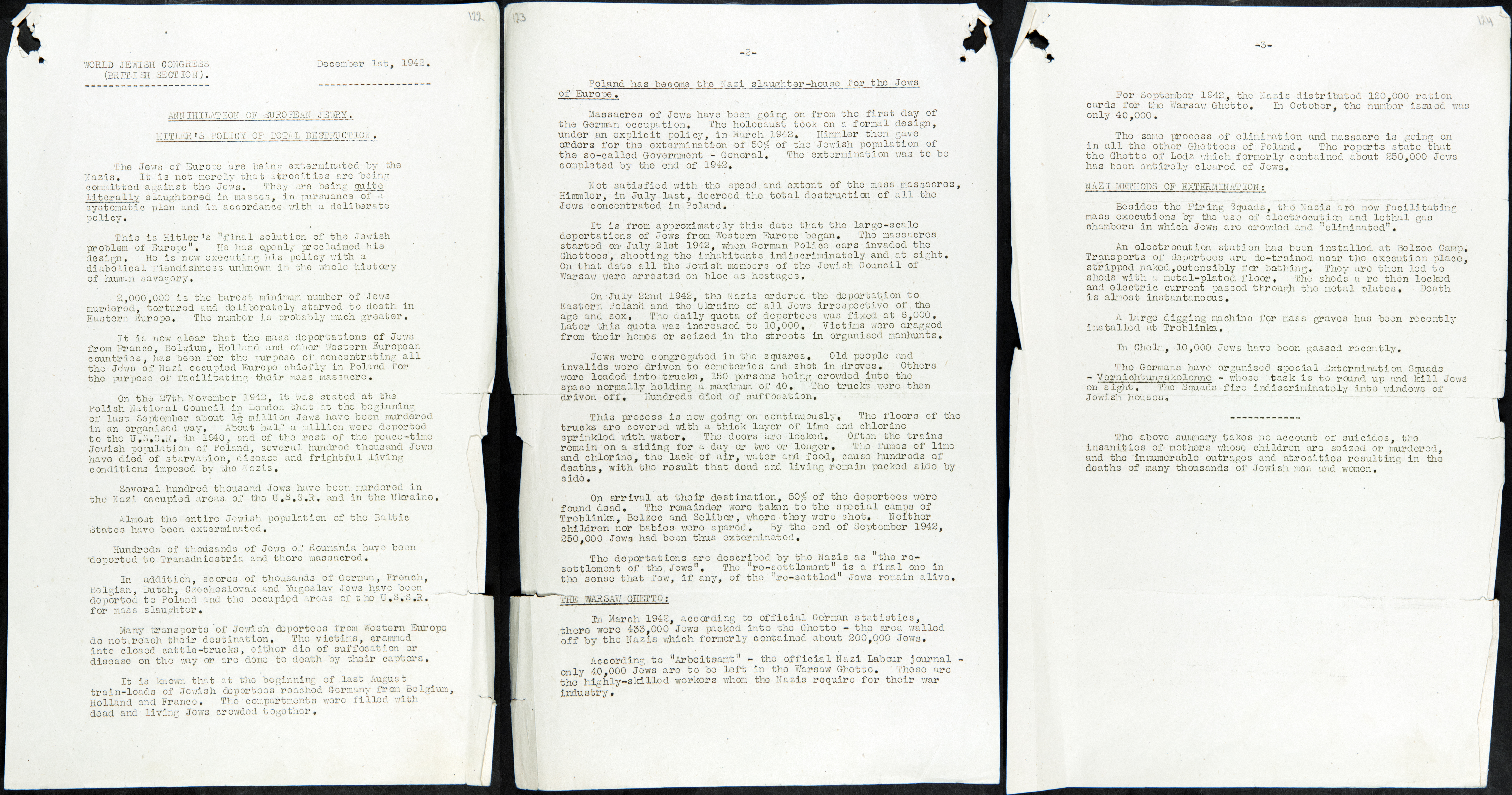
WORLD JEWISH CONGRESS December 1st, 1942.
(BRITISH SECTION).
————
ANNIHILATION OF EUROPEAN JEWRY.
HITLER’S POLICY OF TOTAL DESTRUCTION.
The Jews of Europe are being exterminated by the Nazis. It is not merely that atrocities are being committed against the Jews. They are being quite literally slaughtered in masses, in pursuance of a systematic plan and in accordance with a deliberate policy.
This is Hitler’s ‘final solution of the Jewish problem of Europe’. He has openly proclaimed his design. He is now executing his policy with a diabolical fiendishness unknown in the whole history of human savagery.
2,000,000 is the barest minimum number of Jews murdered, tortured and deliberately starved to death in Eastern Europe. The number is probably much greater.
It is now clear that the mass deportation of Jews from France, Belgium, Holland and other Western European countries, has been for the purpose of concentrating all the Jews of Nazi occupied Europe chiefly in Poland for the purpose of facilitating their mass massacre.
On the 27th November 1942, it was stated at the Polish National Council in London that at the beginning of last September about 1 ½ million Jews have been murdered in an organised way. About half a million were deported to the U.S.S.R. in 1940, and of the rest of the peace-time Jewish population of Poland, several hundred thousand Jews have died of starvation, disease and frightful living conditions imposed by the Nazis.
Several hundred thousand Jews have been murdered in the Nazi occupied areas of the U.S.S.R. and in the Ukraine.
Almost the entire Jewish population of the Baltic States have been exterminated.
Hundreds of thousands of Jews of Roumania have been deported to Transdniestria and there massacred.
In addition, scores of thousands of German, French, Belgian, Dutch, Czechoslovak and Yugoslav Jews have been deported to Poland and the occupied areas of the U.S.S.R. for mass slaughter.
Many transports of Jewish deportees from Western Europe do not reach their destination. The victims, crammed into closed cattle-trucks, either die of suffocation or disease on the way or are done to death by their captors.
It is known that at the beginning of last August train-loads of Jewish deportees reached Germany from Belgium, Holland and France. The compartments were filled with dead and living Jews crowded together.
POLAND HAS BECOME THE NAZI SLAUGHTER-HOUSE FOR THE JEWS OF EUROPE:
Massacres of Jews have been going on from the first say of the German occupation. The holocaust took on a formal design, under an explicit policy, in March 1942. Himmler then gave orders for the extermination of 50% of the Jewish population of the so-called Government-General. The extermination was to be completed by the end of 1942.
Not satisfied with the speed and extent of the mass massacres, Himmler, in July last, decreed the total destruction of all the Jews concentrated in Poland.
It is from approximately this date that the large-scale deportations of Jews from Western Europe began. The massacres started on July 21st 1942, when German Police cars invaded the Ghettoes, shooting the inhabitants indiscriminately and at sight. On that date all the Jewish members of the Jewish Council of Warsaw were arrested on bloc as hostages.
On July 22nd 1942, the Nazis ordered the deportation to Eastern Poland and the Ukraine of all Jews irrespective of the age and sex. The daily quota of deportees was fixed at 6,000. Later this quota was increased to 10,000. Victims were dragged from their homes or seized in the streets in organised manhunts.
Jews were congregated in the squares. Old people and invalids were driven to cemeteries and shot in droves. Others were loaded into trucks, 150 persons being crowded into the space normally holding a maximum of 40. The trucks were then driven off. Hundreds died of suffocation.
This process is now going on continuously. The floors of the trucks are covered with a thick layer of lime and chlorine sprinkled with water. The doors are locked. Often the trains remain on a siding for a day or two or longer. The fumes of lime and chlorine, the lack of air, water and food, cause hundreds of deaths, with the result that dead and living remain packed side by side.
On arrival at their destination, 50% of the deportees were found dead. The remainder were taken to the special camps of Treblinka, Belzec and Selibor, where they were shot. Neither children nor babies were spared. By the end of September 1942, 250,000 Jews had been thus exterminated.
The deportations are described by the Nazis as “the re-settlement of the Jews”. The “re-settlement” is a final one in the sense that few, if any, of the “re-settled” Jews remain alive.
THE WARSAW GHETTO:
In March 1942, according to official German statistics, there were 433,000 Jews packed into the Ghetto – the area walled off by the Nazis which formerly contained about 200,000 Jews.
According to ‘Arbeitsamt’ – the official Nazi Labour journal – only 40,000 Jews are to be left in the Warsaw Ghetto. These are the highly-skilled workers who the Nazis require for their war industry.
For September 1942, the Nazis distributed 120,000 ration cards for the Warsaw Ghetto. In October, the number issued was only 40,000.
The same process of elimination and massacre is going on in all the other Ghettoes of Poland. The reports state that the Ghetto of Lodz which formerly contained about 250,000 Jews has been entirely cleared of Jews.
NAZI METHODS OF EXTERMINATION:
Besides the Firing Squads, the Nazis are now facilitating mass executions by the use of electrocution and lethal gas chambers in which Jews are crowded and ‘eliminated’.
An electrocution station has been installed at the Belzec Camp. Transports of deportees are de-trained near the execution place, sheds with a metal plated floor. The sheds are then locked and an electrical current passed through the metal plates. Death is almost instantaneous.
A large digging machine for mass graves has been recently installed at Treblinka.
In Chelm, 10,000 Jews have been gassed recently.
The Germans have organised special Extermination Squads – Vernichtungskolonne – whose task is to round up and kill Jews on sight. The Squads fire indiscriminately into windows of Jewish houses.
————
The above summary takes no account of suicides, the insanities of mothers whose children are seized or murdered, and the innumerable outrages and atrocities resulting in the deaths of many thousands of Jewish men and women.
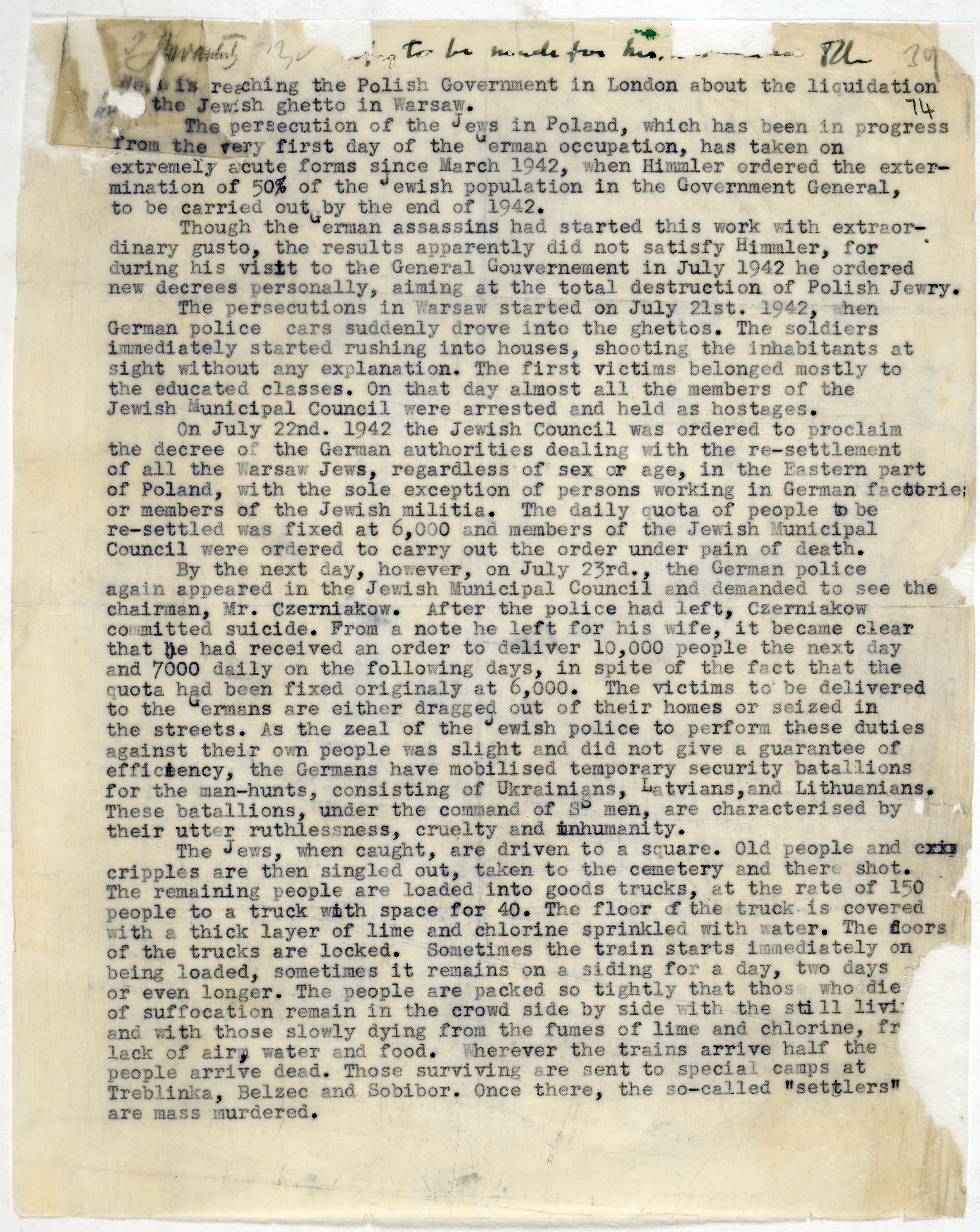
News is reaching the Polish Government in London about the liquidation [of] the Jewish ghetto in Warsaw.
The persecution of the Jews in Poland, which has been in progress from the very first day of the German occupation, has taken on extremely acute forms since March 1942, when Himmler ordered the extermination of 50% of the Jewish population in the Government General, to be carried out by the end of 1942.
Though the German assassins had started this work with extraordinary gusto, the results apparently did not satisfy Himmler, for during his visit to the General Gouvernement [sic] in July 1942 he ordered new decrees personally, aiming at the total destruction of Polish Jewry.
The persecutions in Warsaw started on July 21st. 1942, when German police cars suddenly drove into the ghettos. The soldiers immediately started rushing into houses, shooting the inhabitants at sign without any explanation. The first victims belonged mostly to the educated classes. On that day almost all the members of the Jewish Municipal Council were arrested and held as hostages.
On July 22nd. 1942 the Jewish Council was ordered to proclaim the decree of the German authorities dealing with the resettlement of all the Warsaw Jews, regardless of sex or age, in the Eastern part of Poland, with the sole exception of persons working in German factories or members of the Jewish militia. The daily quota of people to be re-settled was fixed at 6,000 and members of the Jewish Municipal Council were ordered to carry out the order under the pain of death.
By the next day, however, on July 23rd., the German police again appeared in the Jewish Municipal Council and demanded to see the chairman, Mr. Czerniakow. After the police had left, Czerniakow committed suicide. From a note he left for his wife, it became clear that he had received an order to deliver 10,000 people the next day and 7000 daily on the following days, in spite of the fact that the quota had been fixed originally at 6,000. The victims to be delivered to the Germans are either dragged out of their homes or seized in the streets. As the zeal of the Jewish police to perform these duties against their own people was slight and did not give a guarantee of efficiency, the Germans have mobilised temporary security batallions [sic] for the man-hunts, consisting of Ukrainians, Latvians, and Lithuanians. These batallions, under the command of SS men, are characterised by their utter ruthlessness, cruelty and inhumanity.
The Jews, when caught, are driven to a square. Old people and cripples are then singled out, taken to the cemetery and there shot. The remaining people are loaded into goods trucks, at the rate of 150 people to a truck with space for 40. The floor of the truck is covered with a thick layer of lime and chlorine sprinkled with water. The doors of the trucks are locked. Sometimes the train starts immediately on being loaded, sometimes it remains on a siding for a day, two days or even longer. The people are packed so tightly that those who die of suffocation remain the crowd side by side with the still living and those slowly dying from the fumes of lime and cholorine, from lack of air, water and food. Wherever the trains arrive half the people arrive dead. Those surviving are sent to special camps at Treblinka, Belzec and Sobibor. Once there, the so-called ‘settlers’ are mass murdered.
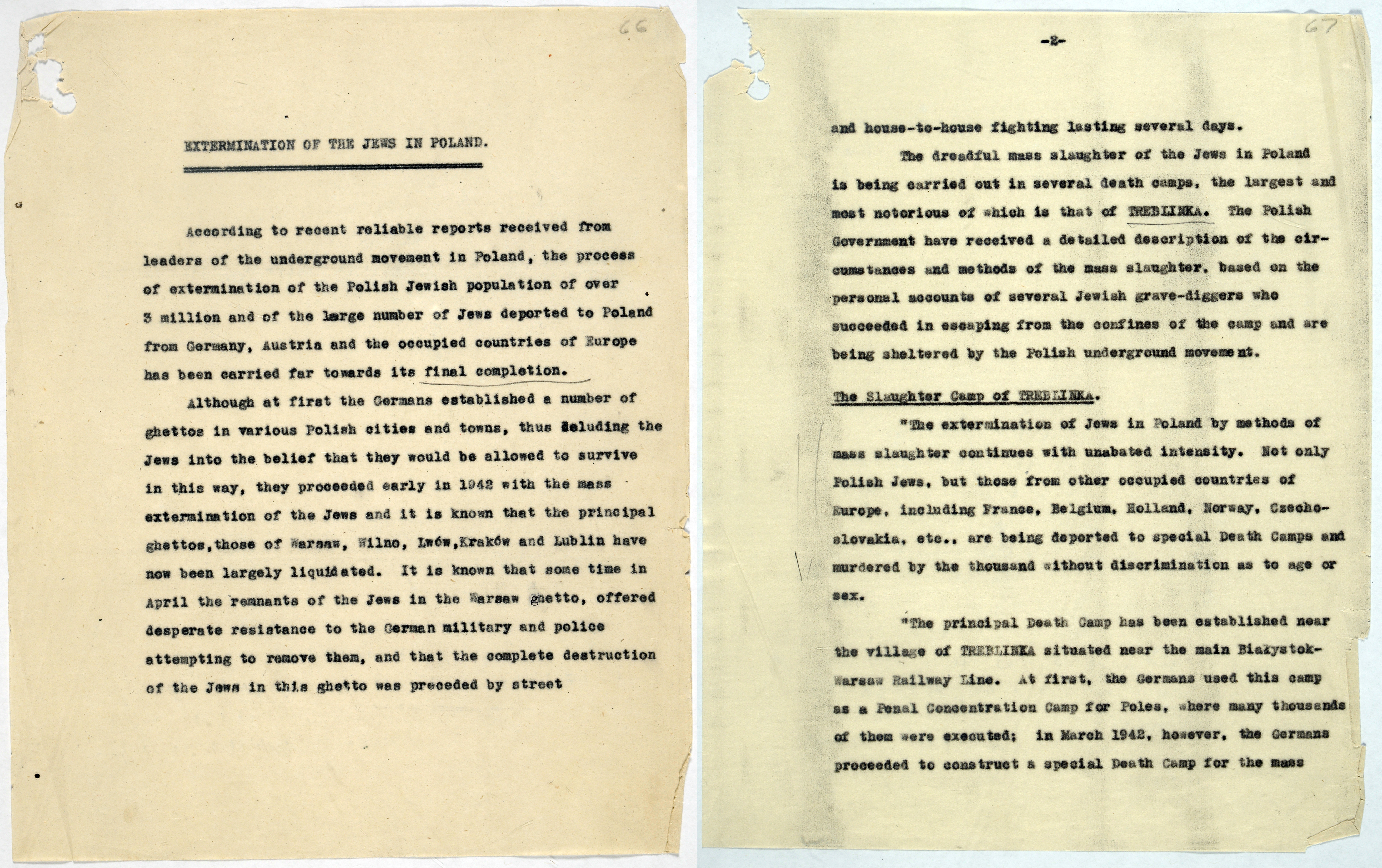
EXTERMINATION OF THE JEWS IN POLAND
According to recent reliable reports received from leaders of the underground movement in Poland, the process of extermination of the Polish Jewish population of over 3 million and of the large number of Jews deported to Poland from Germany, Austria and the occupied countries of Europe has been carried far towards its final completion.
Although at first the Germans established a number of ghettos in various Polish cities and towns, thus deluding the Jews into the belief that they would be allowed to survive in this way, they proceeded early in 1942 with the mass extermination of the Jews and it is known that the principal ghettos, those of Warsaw, Wilno, Lwow, Krakow and Lublin have now been largely liquidated. It is known that some time in April the remnants of the Jews in the Warsaw ghetto, offered desperate resistance to the German military and police attempting to remove them, and that the complete destruction of the Jews in this ghetto was preceded by street and house-to-house fighting lasting several days.
The dreadful mass slaughter of the Jews in Poland is being carried out in several death camps, the largest and most notorious of which is that of TREBLINKA. The Polish Government have received a detailed description of the circumstances and methods of the mass slaughter, based on the personal accounts of several Jewish grave-diggers who succeeded in escaping from the confines of the camp and are being sheltered by the Polish underground movement.
The Slaughter Camp of TREBLINKA.
‘The extermination of Jews in Poland by methods of mass slaughter continues with unabated intensity. Not only Polish Jews, but those from other occupied countries of Europe, including France, Belgium, Holland, Norway, Czechoslovakia, etc., are being deported to special Death Camps and murdered by the thousand without discrimination as to age or sex.
‘The principal Death Camp has been established near the village of TREBLINKA situated near the main Biakystok-Warsaw Railway Line. At first, the Germans used this camp as a Penal Concentration Camp for Poles, where many thousands of them were executed in March 1942, however, the Germans proceeded to construct a special Death Camp for their mass …’
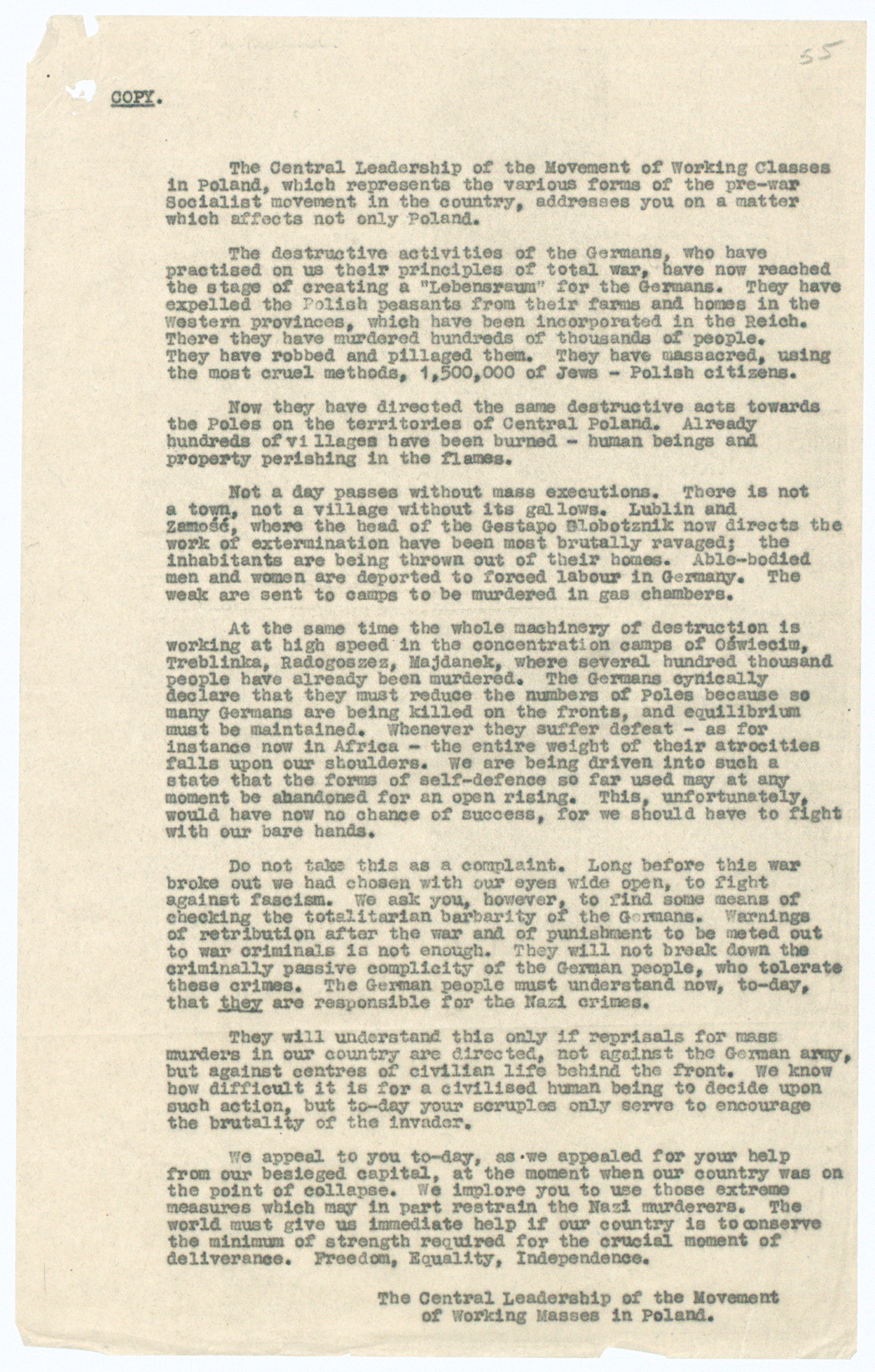
COPY
The Central Leadership of the Movement of Working Classes in Poland, which represents the various forms of the pre-war Socialist movement in the country, addresses you on a matter which affects not only Poland.
The destructive activities of the Germans, who have practised on us their principles of total war, have now reached the stage of creating a ‘Lebensraum’ for the Germans. They have expelled the Polish peasants from their farms and homes in the Western provinces, which have been incorporated in the Reich. There they have murdered hundreds of thousands of people. They have robbed and pillaged them. They have massacred, using the most cruel methods, 1,500,000 of Jews – Polish citizens.
Now they have directed the same destructive acts towards the Poles on the territories of Central Poland. Already hundreds of villages have been burned – human beings and property perishing in the flames.
Not a day passes without mass executions. There is not a town, not a village without its gallows. Lublin and Zamose, where the head of the Gestapo Blobotznik now directs the work of extermination have been most brutally ravaged; the inhabitants are being thrown out of their homes. Able-bodied men and women are deported to forced labour in Germany. The weak are sent to camps to be murdered in gas chambers.
At the same time the whole machinery of destruction is working at high speed in the concentration camps of Oswiecim, Treblinka, Radogoszez, Majdanek, where several hundred thousand people have already been murdered. The Germans cynically declare that they must reduce the numbers of Poles because many Germans are being killed on the fronts, and equilibrium must be maintained. Whenever they suffer defeat – as for instance now in Africa – the entire weight of their atrocities falls upon our shoulders. We are being driven into such a state that the forms of self-defence so far used may at any moment be abandoned for an open rising. This, unfortunately, would have now no chance of success, for we should have to fight with our bare hands.
Do not take this as a complaint. Long before this war broke out we had chosen with our eyes wide open, to fight against fascism. We ask you, however, to find some means of checking the totalitarian barbarity of the Germans. Warnings of retribution after the war and of punishment to be meted out to war criminals is not enough. They will not break down the criminally passive complicity of the German people, who tolerate these crimes. The German people must understand now, to-day, that they are responsible for the Nazi crimes.
They will understand this only if reprisals for mass murders in our country are directed, not against the German army, but against centres of civilian life behind the front. We know how difficult it is for a civilised human being to decide upon such action, but to-day your scruples only serve to encourage the brutality of the invader.
We appeal to you to-day, as we appealed for your help from our besieged capital, at the moment when our country was on the point of collapse. We implore you to use those extreme measures which may in part restrain the Nazi murderers. The world must give us immediate help if our country is to conserve the minimum of strength required for the crucial moment of deliverance. Freedom, Equality, Independence.
The Central Leadership of the Movement of Working Masses in Poland.
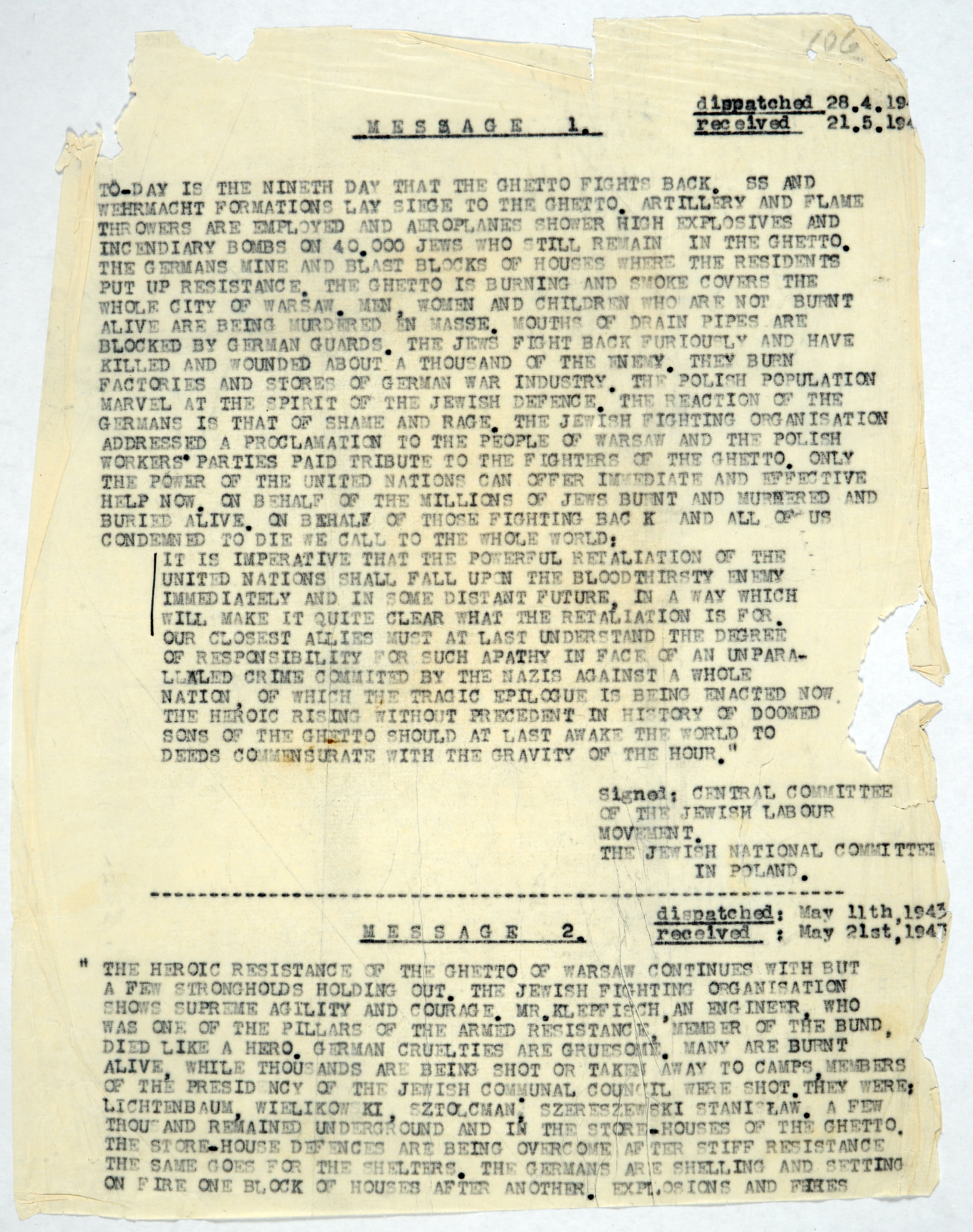
MESSAGE 1 dispatched 28.4.19[43] received 21.5.194[3]
Today is the nineth [sic] day that the Ghetto fights back. SS and Wehrmacht formations lay siege to the ghetto. Artillery and flame throwers are employed and aeroplanes shower high explosives and incendiary bombs on 40,000 Jews who still remain in the ghetto. The Germans mine and blast blocks of houses where the residents have put up resistance. The ghetto is burning and smoke covers the whole city of Warsaw. Men, women and children who are not burnt alive are being murdered en masse. Mouths of drain pipes are blocked by German guards. The Jews fight back furiously and have killed and wounded about a Thousand of the enemy. They burn factories and stores of German war industry. The Polish population marvel at the spirit of the Jewish defence. The reaction of the Germans is that of shame and rage. The Jewish fighting organisation addressed a proclamation to the people of Warsaw and the Polish workers parties paid tribute to the fighters of the ghetto. Only the power of the United Nations can offer immediate and effective help now. On behalf of the millions of Jews burnt and murdered and buried alive. On behalf of those fighting back and all of us condemned to die we call to the whole world;
It is imperative that the powerful retaliation of the United Nations shall fall upon the bloodthirsty enemy immediately and in some distant future, in a way which will make it quite clear what the retaliation is for. Our closest allies must at last understand the degree of responsibility for such apathy in face of an unparalleled crime commited [sic] by the Nazis against a whole nation, of which the tragic epilogue is being enacted now. The heroic rising without precedent in history of doomed sons of the ghetto should at last awake the world to deeds commensurate with the gravity of the hour.
Signed: Central committee of the Jewish Labour Movement. The Jewish National Committee in Poland.
MESSAGE 2 dispatched: May 11th, 1943- received May 21st 194[3]
The heroic resistance of the ghetto of Warsaw continues with but a few strongholds holding out. The Jewish fighting organisation shows supreme agility and courage. Mr. Klepfisch, an engineer, who was one of the pillars of the armed resistance, member of the bund, died like a hero. German cruelties are gruesome. Many are burnt alive, while thousands are being shot or taken away to camps, members of the presidency of the Jewish communal council were shot. They were: Lichtenbaum, Wielikowski, Sztolcman, Szereszewski Stanislaw. A few thousand remained underground and in the store-houses of the ghetto. The store-house defences are being overcome after stiff resistance the same goes for the shelters. The Germans are shelling and setting on fire one block of houses after another. Explosions and fires […]
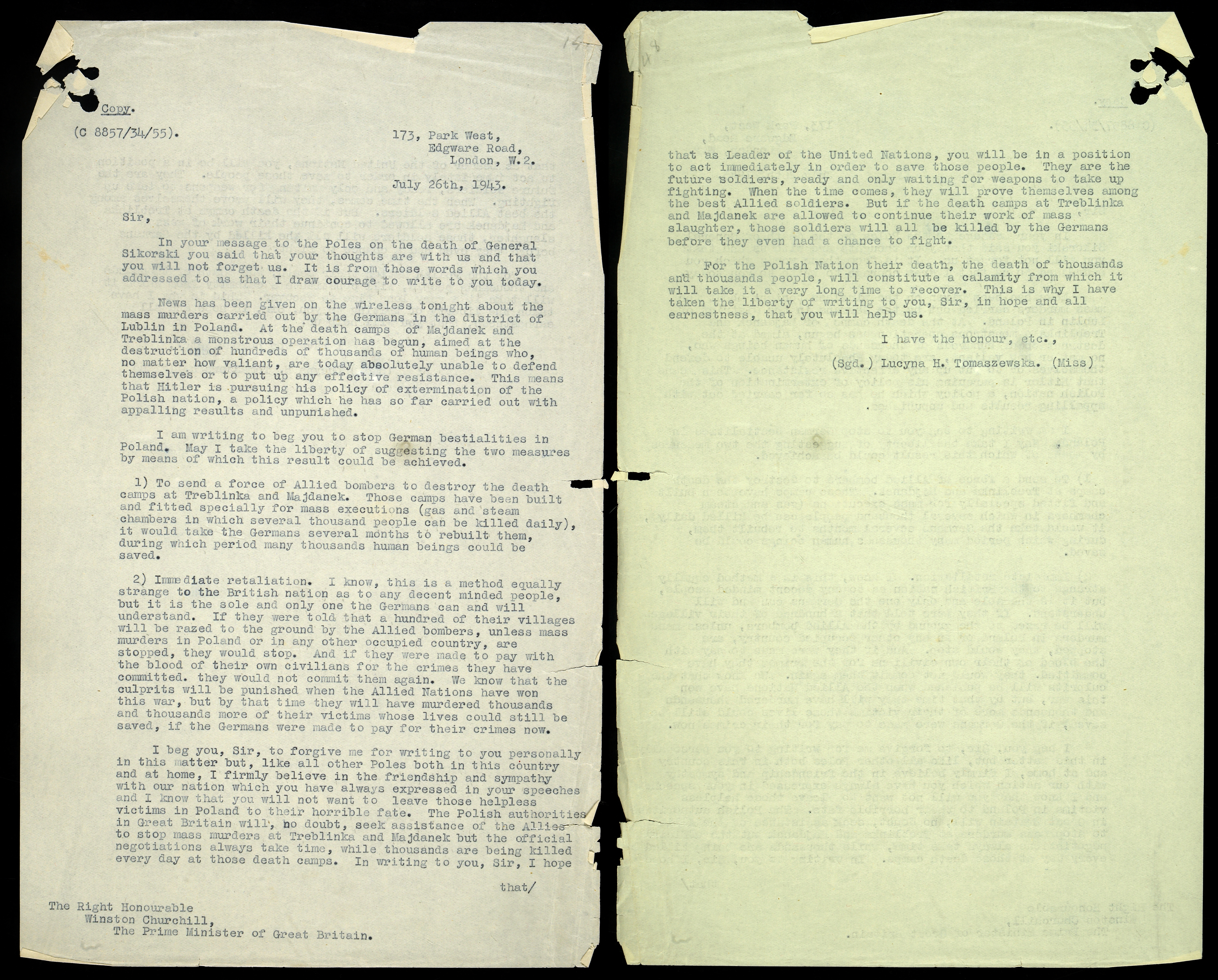
1.
Copy. (C 8857/34/55). 173, Park West, Edgware Road, London, W.2.
July 26th, 1943.
Sir,
In your message to the Poles on the death of General Sikorski you said that your thoughts are with us and that you will not forget us. It is from these words which you addressed to us that I draw courage to write to you today.
News has been given on the wireless tonight about the mass murders carried out by the Germans in the district of Lublin in Poland. At the death camps of Majdanek and Treblinka a monstrous operation has begun, aimed at the destruction of hundreds of thousands of human beings who, no matter how valiant, are today absolutely unable to defend themselves or to put up any effective resistance. This means that Hitler is pursuing his policy of extermination of the Polish nation, a policy which he has so far carried out with appalling results and unpunished.
I am writing to beg you to stop German bestialities in Poland. May I take the liberty of suggesting the two measures by means of which this result could be achieved.
I beg you, Sir, to forgive me for writing to you personally in this matter but, like all other Poles both in this country and at home, I firmly believe in the friendship and sympathy with our nation which you have always expressed in your speeches and I know that you will not want to leave those helpless victims in Poland to their horrible fate. The Polish authorities in Great Britain will, no doubt, seek assistance of the Allies to stop mass murders at Treblinka and Majdanek but the official negotiations always take time, while thousands are being killed every day at those death camps. In writing to you, Sir, I hope that/
The Right Honourable
Winston Churchill,
The Prime Minister of Great Britain.
2.
that as Leader of the United Nations, you will be in a position to act immediately in order to save those people. They are the future soldiers, ready and only waiting for weapons to take up fighting. When the time comes, they will prove themselves among the best Allied soldiers. But if the death camps at Treblinka and Majdanek are allowed to continue their work of mass slaughter, those soldiers will all be killed by the Germans before they even had a chance to fight.
For the Polish Nation their death, the death of thousands and thousands people, will constitute a calamity from which it will take it a very long time to recover. This is why I have taken the liberty of writing to you, Sir, in hope and all earnestness, that you will help us.
I have the honour, etc.,
(Sgd.) Lucyna H. Tomaszewska. (Miss)
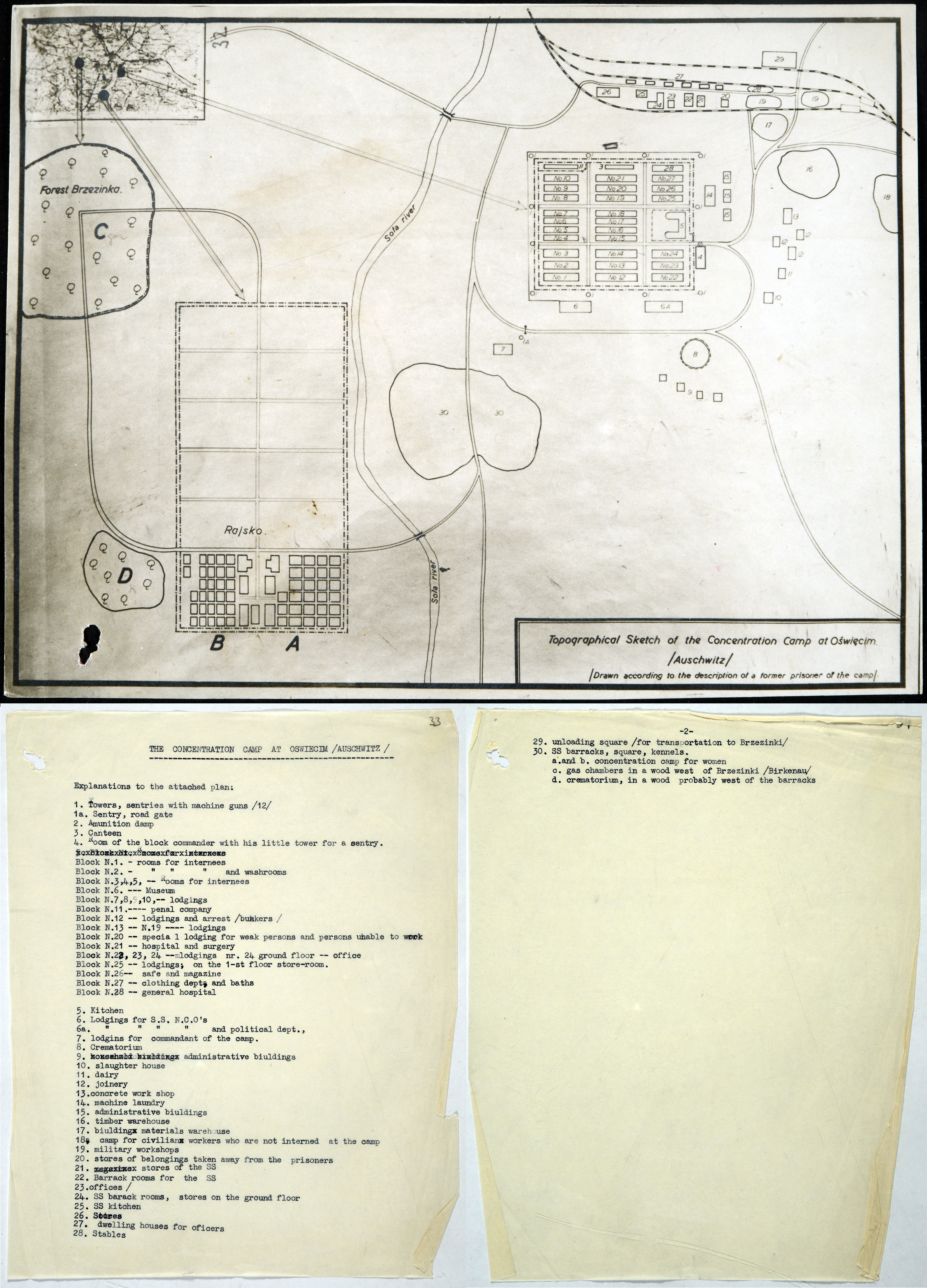
The Concentration Camp at Oswiecim/Auschwitz/
Explanations to the attached plan:
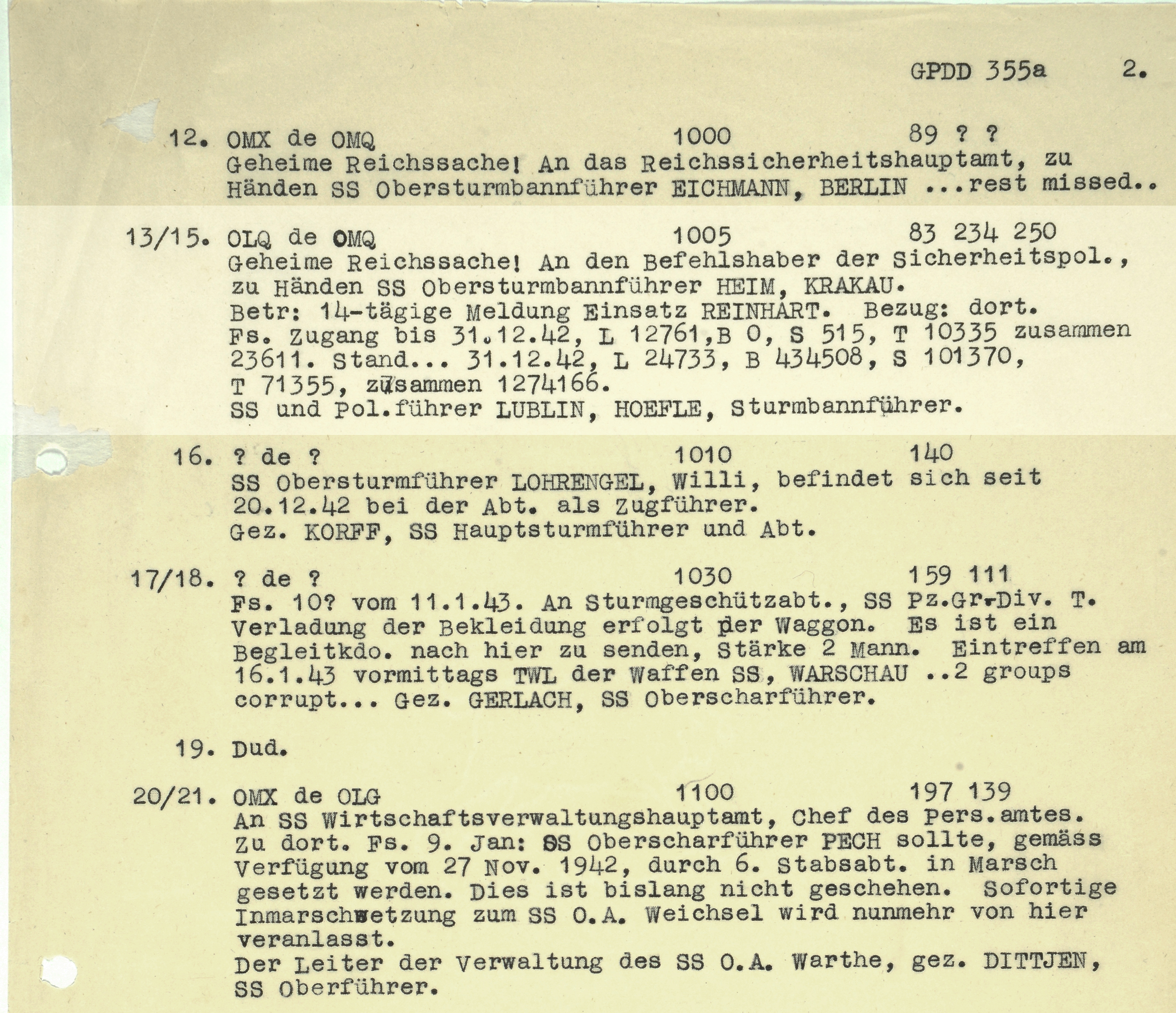
13/15 OLQ de OMQ 1005 83 234 250
State secret! To the commander of the Security Police, for the attention of SS Obersturmbannfuhrer HEIM, KRAKAU. Re: 14-day report operation REINHARD. Reference: radio telegram from there
Recorded arrivals until December 42, L 12761, B 0, S 515, T 10335, totalling 23611. Situation 31 December 42, L 24733, B 434508, S 101370, T 71355, totalling 1274166. SS and police leader of Lublin, HOFLE, Sturmbannfuhrer
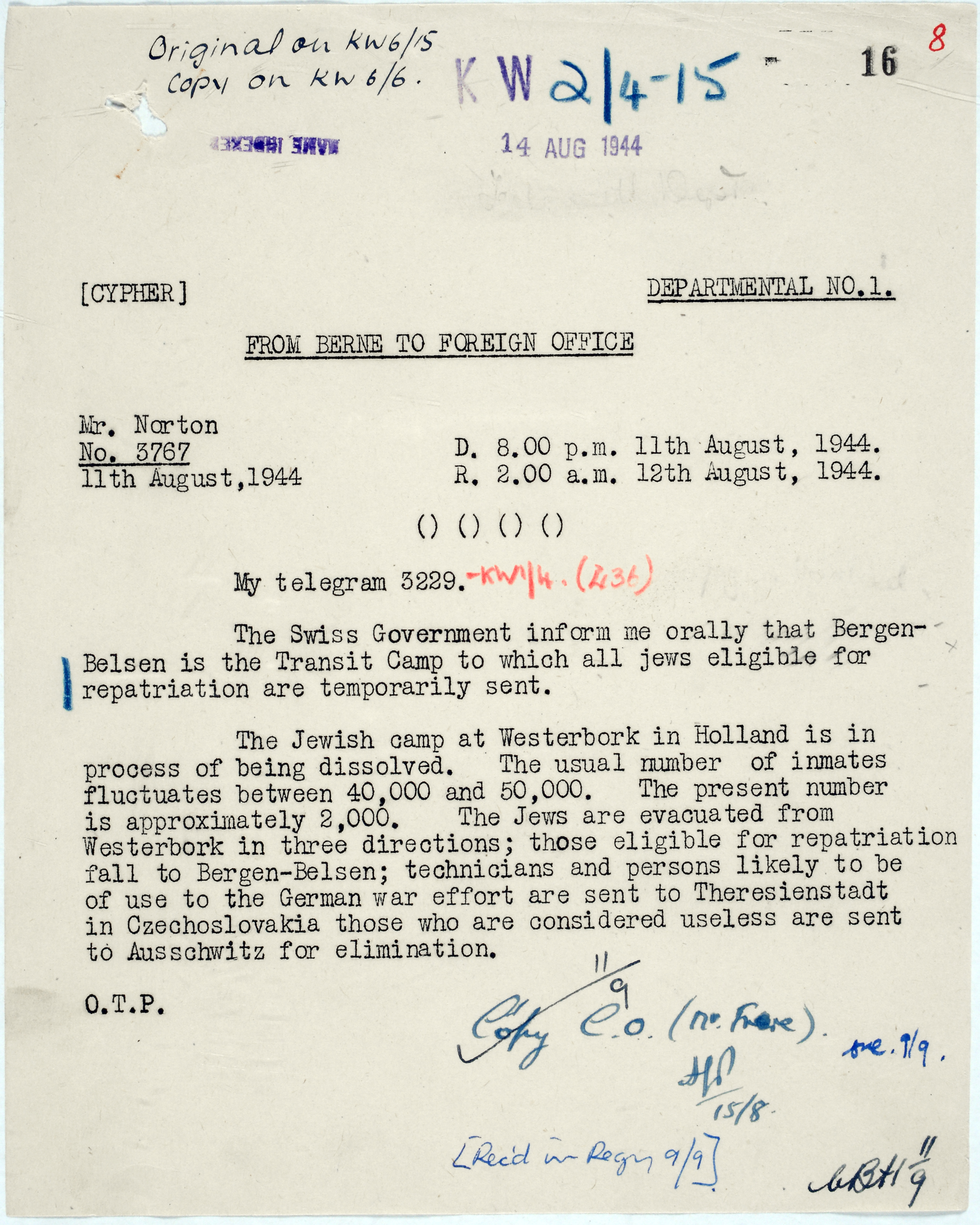
[CYPHER] Departmental No.1.
From Berne to Foreign Office
Mr Norton
No. 3767 D.8.00p.m. 11th August, 1944.
11th August, 1944 R.2.00a.m. 12th August, 1944
() () () ()
My telegram 3229.
The Swiss Government inform me orally that Bergen-Belsen is the Transit Camp to which all jews eligible for repatriation are temporarily sent.
The Jewish camp at Westerbork in Holland is in process of being dissolved. The usual number of inmates fluctuates between 40,000 and 50,000. The present number is approximately 2,000. The Jews are evacuated from Westerbork in three directions; those eligible for repatriation fall to Bergen-Belsen; technicians and persons likely to be of use to the German war effort are sent to Theresienstadt in Czechoslovakia those who are considered useless are sent to Ausschwitz for elimination.
O.T.P.
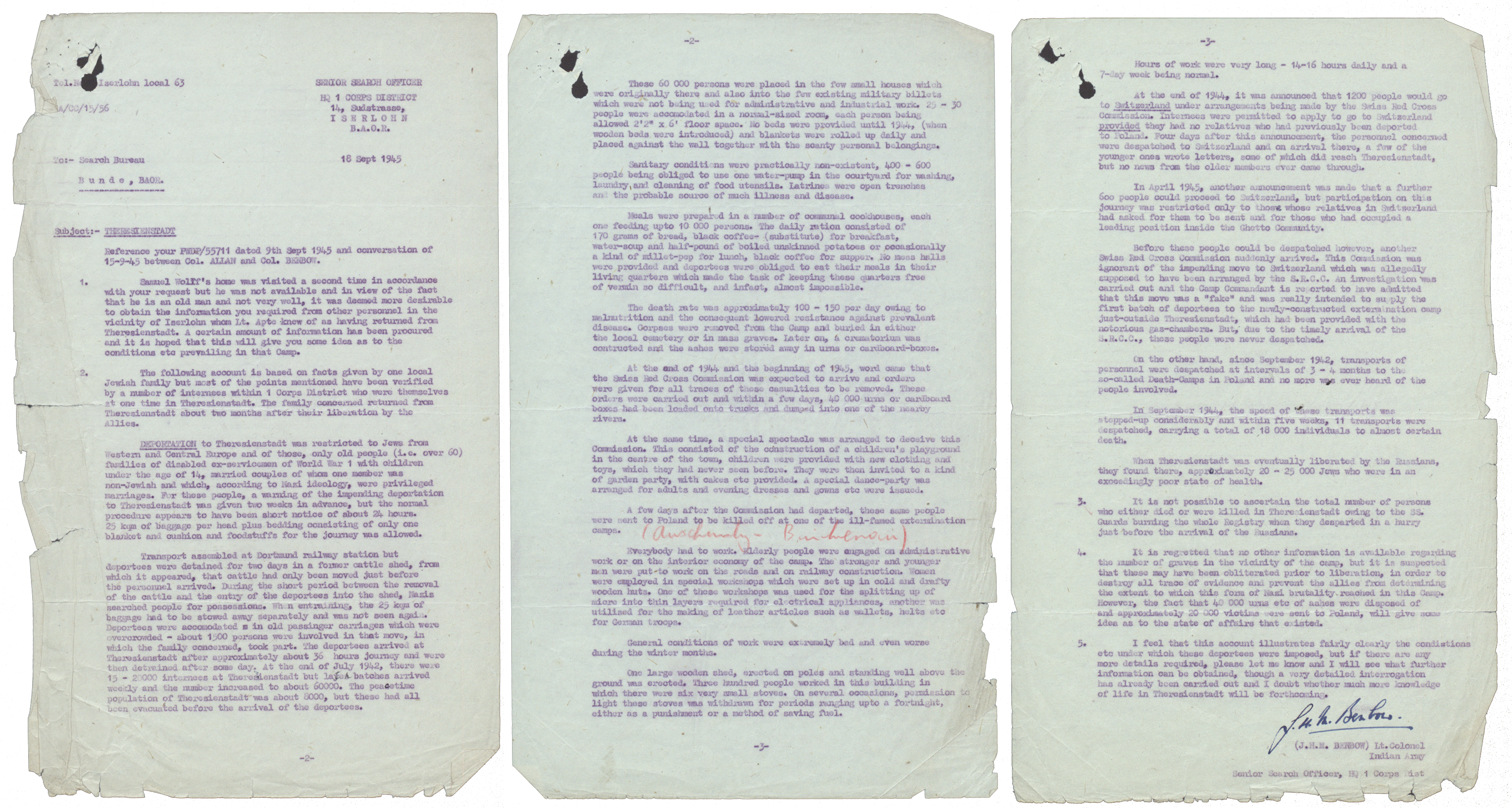
Senior Search Officer
HQ 1 Corps District
14, Sudstrasse,
Iserlohn
B.A.O.R.
To: – Search Bureau
Bunde, BAOR. 18 Sept 1945
——————–
Subject: – Theresienstadt
Reference your PWDP/55711 dated 9th Sept 1945 and conversation of 15-9-45 between Col. ALLAN and Col. BENBOW.
1. Samuel Wolff’s home was visited a second time in accordance with your request but he was not available and in view of the fact that he is an old man and not very well, it was deemed more desirable to obtain the information you required from other personnel in the vicinity of Iserlohn whom Lt. Apte knew of as having returned from Theresienstadt. A certain amount of information has been procured and it is hoped that this will give you some idea as to the conditions etc prevailing in that Camp.
2. The following account is based on facts given by one local Jewish family but most of the points mentioned have been verified by a number of internees within 1 Corps District who were themselves at one time in Theresienstadt. The family concerned returned from Theresienstadt about two months after their liberation by the Allies.
DEPORTATION to Theresienstadt was restricted to Jews from Western and Central Europe and of those, only old people (i.e. over 60) families of disabled ex-serviceman of World War 1 with children under the age of 14, married couples of whom one member was non-Jewish and which, according to Nazi ideology, were privileged marriages. For these people, a warning of the impending deportation to Theresienstadt was given two weeks in advance, but the normal procedure appears to have been short notice of about 24 hours. 25kqm of baggage per head plus bedding consisting of only one blanket and cushion and foodstuffs for the journey was allowed.
Transport assembled at Dortmund railway station but deportees were detained for two days in a former cattle shed, from which it appeared, that cattle had only been moved just before the personnel arrived. During the short period between the removal of the cattle and the entry of the deportees into the shed, Nazis searched people for possessions. When entraining, the 25 kqm of baggage had to be stowed away separately and was not seen again. Deportees were accommodated in old passinger [sic] carriages which were overcrowded – about 1500 persons were involved in that move, in which the family concerned, took part. The deportees arrived at Theresienstadt after approximately about 36 hours journey and were then detrained after some day. At the end of July 1942, there were 15-20000 internees at Theresienstadt but later batches arrived weekly and the number increased to about 60000. The peacetime population of Theresienstadt was about 8000, but these had all been evacuated before the arrival of the deportees.
2
These 60000 persons were placed in the few small houses which were originally there and also into the five existing military billets which were not being used for administrative and industrial work. 25-30 people were accommodated in a normal-sized room, each person being allowed 2’2” x 6’ floor space. No beds were provided until 1944, (when wooden beds were introduced) and blankets were rolled up daily and placed against the wall together with the scanty personal belongings.
Sanitary conditions were practically non-existent, 400-600 people being obliged to use one water-pump in the courtyard for washing, laundry and cleaning of food utensils. Latrines were open trenches and the probable cause of much illness and disease.
Meals were prepared in a number of communal cookhouses, each one feeding upto 10000 persons. The daily ration consisted of 170 grams of bread, black coffee- (substitute) for breakfast, water-soup and half-pound of boiled unskinned potatoes or occasionally a kind of millet-pep for lunch, black coffee for supper. No mess halls were provided and deportees were obliged to eat their meals in their living quarters which made the task of keeping these quarters free of vermin so difficult, and infact [sic], almost impossible.
The death rate was approximately 100-150 per day owing to malnutrition and the consequent lowered resistance against prevalent disease. Corpses were removed from the Camp and buried in either the local cemetary or in mass graves. Later on, a crematorium was constructed and the ashes were stored away in urns or cardboard-boxes.
At the end of 1944 and the beginning of 1945, word came that the Swiss Red Cross Commission was expected to arrive and orders were given for all traces of these casualties to be removed. These orders were carried out and within a few days, 40000 urns or cardboard boxes had been loaded onto trucks and dumped into one of the nearby rivers.
At the same time, a special spectacle was arranged to deceive this Commission. This consisted of the construction of a children’s playground in the centre of the town, children were provided with new clothing and toys, which they had never seen before. They were then invited to a kind of garden party, with cakes etc provided. A special dance-party was arranged for adults and evening dresses and gowns etc were issued.
A few days after the Commission had departed, these same people were sent to Poland to be killed off at one of the ill-famed extermination camps.
Everybody had to work. Elderly people were engaged on administrative work or on the interior economy of the camp. The stronger and younger men were put-to work on the roads and on railway construction. Women were employed in special workshops which were set up in cold and drafty wooden huts. One of these workshops was used for the splitting up of micre into thin layers required for electrical appliances, another was utilised for the making of leather articles such as wallets, belts etc for German troops.
General conditions of work were extremely bad and even worse during the winter months.
One large wooden shed, erected on poles and standing well above the ground was erected. Three hundred people worked in this building in which there were six very small stoves. On several occasions, permission to light these stoves was withdrawn for periods ranging upto a fortnight, either as a punishment of a method of saving fuel.
3
Hours of work were very long – 14-16 hours daily and a 7-day week being normal.
At the end of 1944, it was announced that 1200 people would go to Switzerland under arrangements being made by the Swiss Red Cross Commission. Internees were permitted to apply to go to Switzerland provided they had no relatives who had previously been deported to Poland. Four days after this announcement, the personnel concerned were despatched to Switzerland and on arrival there, a few of the younger ones wrote letters, some of which did reach Theresienstadt, but no news from the older members ever came through.
In April 1945, another announcement was made that a further 600 people could proceed to Switzerland, but participation on this journey was restricted only to those whose relatives in Switzerland had asked for them to be sent and for those who had occupied a leading position inside the Ghetto Community.
Before these people could be despatched however, another Swiss Red Cross Commission suddenly arrived. This Commission was ignorant of the impending move to Switzerland which was allegedly supposed to have been arranged by the S.R.C.C. An investigation was carried out and the Camp Commandant is reported to have admitted that this move was a ‘fake’ and was really intended to supply the first batch of deportees to the newly-constructed extermination camp just-outside Theresienstadt, which had been provided with the notorious gas-chambers. But, due to the timely arrival of the S.R.C.C., these people were never despatched.
On the other hand, since September 1942, transports of personnel were despatched at intervals of 3-4 months to the so-called Death-Camps in Poland and no more was ever heard of the people involved.
In September 1944, the speed of these transports was stepped-up considerably and within five weeks, 11 transports were despatched, carrying a total of 18000 individuals to almost certain death.
When Theresienstadt was eventually liberated by the Russians, they found there, approximately 20-25000 Jews who were in an exceedingly poor state of health.
3. It is not possible to ascertain the total number of the persons who either died or were killed in Theresienstadt owing to the SS. Guards burning the whole Registry when they desparted [sic] in a hurry just before the arrival of the Russians.
4. It is regretted that no other information is available regarding the number of graves in the vicinity of the camp, but it is suspected that these may have been obliterated prior to liberation, in order to destroy all trace of evidence and prevent the allies from determining the extent to which this form of Nazi brutality reached in this Camp. However, the fact that 40000 urns etc of ashes were disposed of and approximately 20000 victims were sent to Poland, will give some idea as to the state of affairs that existed.
5. I feel that this account illustrates fairly clearly the conditions etc under which these deportees were imposed, but if there are any more details required, please let me know and I will see what further information can be obtained, though a very detailed interrogation has already been carried out and I doubt whether much more knowledge of life in Theresienstadt will be forthcoming.
(J.H.M. Benbow) Lt. Colonel
Indian Army
Senior Search Officer, HQ 1 Corps Dist
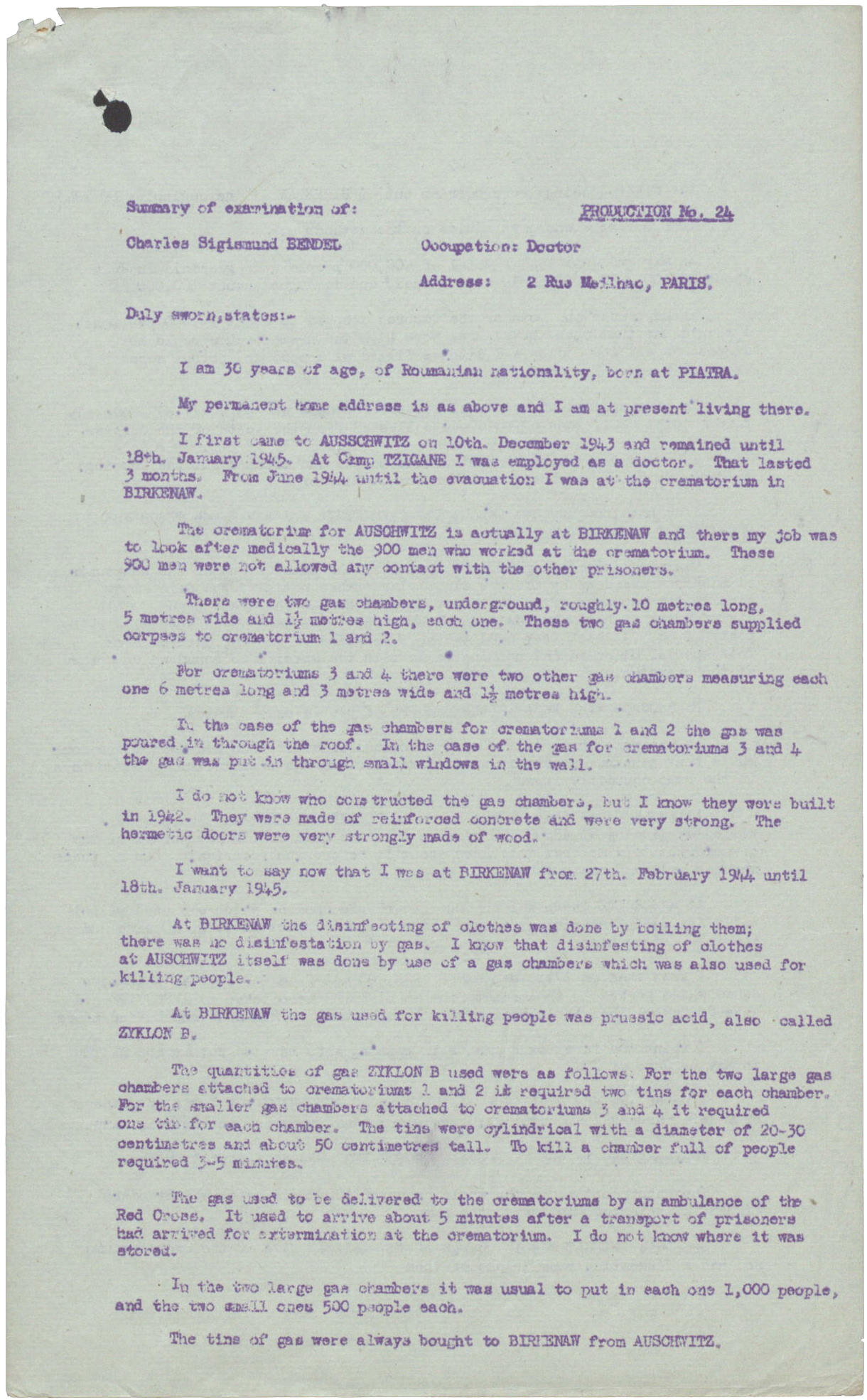
Summary of examination of:
PRODUCTION No. 24
Charles Sigismund BENDEL Occupation: Doctor
Address: 2 Rue Meilhao, PARIS.
Duly sworn, states:–
I am 30 years of age, of Roumanian nationality, born at PIATRA.
My permanent home address is as above and I am at present living there.
I first came to AUSSCHWITZ on 10th. December 1943 and remained until 18th. January 1945. At Camp TZIGANE I was employed as a doctor. That lasted 3 months. From June 1944 until the evacuation I was at the crematorium in BIRKENAW.
The crematorium for AUSCHWITZ is actually at BIRKENAW and there my job was to look after medically the 900 men who worked at the crematorium. These 900 men were not allowed any contact with other prisoners.
There were two gas chambers, underground, roughly 10 metres long, 5 metres wide and 1 1/2 metres high, each one. These two gas chambers supplied corpses to crematorium 1 and 2.
For crematoriums 3 and 4 there were two other gas chambers measuring each one 6 metres long and 3 metres wide and 1 1/2 metres high.
In the case of the gas chambers for crematoriums 1 and 2 the gas was poured in through the roof. In the case of the gas for crematoriums 3 and 4 the gas was put in through small windows in the wall.
I do not know who constructed the gas chambers, but I know they were built in 1942. They were made of reinforced concrete and were very strong. The hermetic doors were very strongly made of wood.
I want to say now that I was at BIRKENAW from 27th. February 1944 until 18th January 1945.
At BIRKENAW the disinfecting of clothes was done by boiling them; there was no disinfestation by gas. I know that disinfecting of clothes at AUSCHWITZ itself was done by use of a gas chambers which was also used for killing people.
At BIRKENAW the gas used for killing people was prussic acid, also called ZYKLON B.
The quantities of gas ZYKLON B used were as follows. For the two large gas chambers attached to crematoriums 1 and 2 it required two tins for each chamber. For the smaller gas chambers attached to crematoriums 3 and 4 it required one tin for each chamber. The tins were cylindrical with a diameter of 20-30 centimetres and about 50 centimetres tall. To kill a chamber full of people required 3-5 minutes.
The gas used to be delivered to the crematoriums by an ambulance of the Red Cross. It used to arrive about 5 minutes after a transport of prisoners had arrived for extermination at the crematorium. I do not know where it was stored.
In the two large gas chambers it was usual to put in each one 1,000 people, and the two small ones 500 people each.
The tins of gas were always brought to BIRKENAW from AUSCHWITZ.
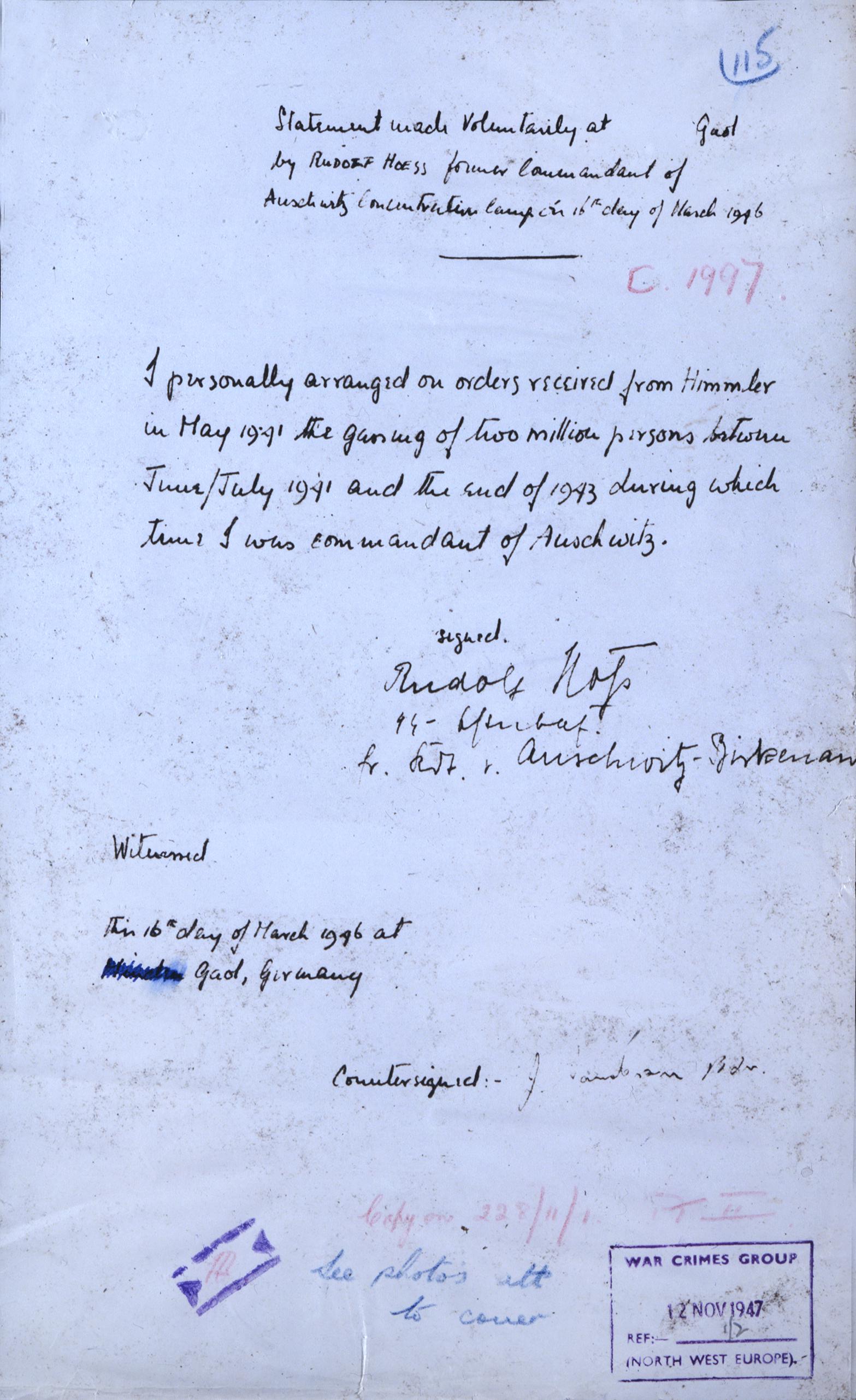
Statement made voluntarily at Gaol by Rudolf HOESS former commandant of Auschwitz Concentration Camp on 16th day of March 1946
I personally arranged on orders received from Himmler in May 1941 the gassing of two million persons between June/July 1941 and the end of 1943 during which time I was commandant of Auschwitz.
Signed
Rudolf Hoess
[unknown]
Fr. Cdt. R. Auschwitz-Birkenau
Witnessed
This 16th day of March 1946 at (-) Gaol, Girmany
Countersigned : – J. [unknown]
In 1944, the demand for SS staff was higher than ever, as the SS needed guards for all its new satellite camps. There were more than 22,000 SS staff in April 1944, and numbers more than doubled before the end of the year. Most new recruits came from the military and served as sentries. Many were older reservists: some prisoners called them “grandpas”. One of them was 56-year-old Hugo Behncke, who was called up in summer 1944. Behncke’s letters to his wife show that he was far from enthusiastic about his posting to a Neuengamme satellite camp. But they also reveal that he barely regarded the inmates as human beings.
Read the transcript below:
Today I’m on duty from 10 to 12, though without anyone relieving me and without the NCO [non-commissioned officer], so I’ll be able to cut a few corners. I can sit down and that makes the work fairly easy, so two hours are bearable. In the SS, everything apart from breathing is forbidden, but if you don’t break a few rules you’re not a soldier. But I always take care that nothing happens. Anyway, in the winter time the prisoners are disinclined to “travel” [escape]. I haven’t heard of a single case all the time I’ve been here. But in spring and summer we have to keep a really close eye on things.
There’s no table to write on and so my writing looks funny. Last night I slept in the next room. It was really cold in there. There has never been any heating in there. I have the space to myself because the others prefer to stay in the warm fug, but I moved out in particular because my neighbour in the bed above me has lice! Yes, lice! I’m not keen on those. I had enough of them in the First World War. He probably got them from being on the recent transport of prisoners to Neuengamme. The prisoners were all sick, dirty and thin as skeletons. All they were good for was to be burned in the Neuengamme crematorium. And a lot of them thought they were being brought to Neuengamme to be burned. Of course, many of them are stupid, primitive people. […]
The war situation is still gloomy, of course, but I’m putting my trust all the same in our counter attack after our enemies’ latest offensive. As I see it, everything is ready. […] So we’re hoping we’ll have victory soon, first over the Russians and then over the western powers. After we’ve won my comrades want to carry on […] as soldiers but not me! I want to get home to you and my children.

He [Theodor Eicke] is to be seen as the real creator of the concentration camps […]. He was also the person who gave the concentration camps their form and appearance. In 1933 the Reich Leader SS [Himmler] lifts him from the general SS and makes him Standartenführer at the Dachau concentration camp following the dismissal of two [sic] incompetent predecessors.
Camp Inspector Theodor Eicke with entourage in Lichtenburg (March 1936)
United States Holocaust Memorial Museum, courtesy of Instytut Pamieci Narodowej
Eicke immediately gets down to reshaping the camp in line with his ideas. Eicke is a rigid old Nazi from the “period of the struggle”. All his doings are based on the idea: National Socialism has seized power for itself at the cost of heavy sacrifices and after a long struggle: the task now is to unify this power against all enemies of this new state. That is how he also sees the concentration camps. To him the inmates are always enemies of the state, who have to be kept locked up, treated harshly and, in the event of resistance, annihilated.
In this spirit he teaches and educates his SS leaders. […] Inmates are handled severely and harshly. The least offence is punished by him with flogging. He has the flogging performed before the assembled guard personnel – at least 2 companies – in order, as he puts it – to make the men hard. The recruits, in particular, are made to watch the floggings regularly. The Alpha and Omega of all of Eicke’s teachings is: out there, beyond the wire, the enemy is lurking: he is watching all your doings in order to profit from your weaknesses. Do not therefore display any weakness, show the enemies of the state your teeth! Anyone showing even the least pity for these enemies of the state has to disappear from our ranks. I can only use hard SS men, ready for anything, there is no place for softies among us. […]
He turned the Guard Troop into a hard, rough team that really guards but is also quick with the rifle if an enemy of the state attempts to escape. Even the slightest offence in guarding is punished incredibly hard by Eicke. Yet his men love him and call him “Papa Eicke”. In the evening he sits among them in their canteen or in their quarters. Talks to them in their language, listens to their troubles and worries, teaches and educates them into what he needs – rough, hard men who shrink from nothing if he gives the order. […]
In 1934 he becomes the first Inspector of Concentration Camps. Initially he controls matters from Dachau, then he moves to Berlin in order to be near to the Reich Leader SS [Himmler]. He now embarks with ardent zeal on reshaping the existing camps of Esterwegen, Sachsenburg, Lichtenburg and Columbia on the Dachau model. Dachau leaders and men are constantly transferred to the other camps in order to bring with them the “Dachau spirit” and to become a little more military and Prussian. The Reich Leader SS gives him a free hand, he knows that he could not entrust the concentration camps to a more “suitable” person. Himmler has repeatedly stated this quite openly, he approved of Eicke’s views on the concentration camps and on enemies of the state and completely shared these views.
SS men committed hundreds of murders in the pre-war camps. But such murders did not happen daily. Before the war, SS men often stopped short of murder, partly because legal courts could still prosecute them (at least in theory). This legal provision fell away during the Second World War, as did other restraints. The result was a dramatic rise in murders by local Camp SS men. Among the killers were Gustav Sorge and Wilhelm Schubert. In 1959, a West German court sentenced them to life imprisonment for crimes committed in Sachsenhausen. The following extract from the judgment details one of Sorge’s murders.
On 5 February 1940 the defendant Sorge broke into the block [20] during the night with a pack of SS men. On his command the prisoners were chased out of their beds, back into them, under their beds and up into the rafters. In the process the SS men beat the prisoners with bull whips and kicked them. [Heinz] Spreckelsen and Witness P. fell over. While the witness managed to get up again quickly, Spreckelsen was unable to and was lying on his stomach directly in front of the defendant, who trampled on the back of his head and on his back with his boots. Though the SS men, Sorge included, smelt of alcohol, they did not at all appear to be drunk. When the SS men had left the hut the witness carried his fellow prisoner Spreckelsen back to bed. His comrades had to carry him to morning roll call. They laid him next to the hut. The witness then took him to the sick bay. Immediately after being admitted Spreckelsen died in the arms of Witness P., who closed his eyes. According to his death certificate Spreckelsen died aged 25 on 5 February 1940 from “an influenzal infection”. […]
The defendant killed a prisoner from base motives, regarding him as an outlaw without rights. He believed he could do what he liked with him without let or hindrance.
During the war, most prisoners were haunted by hunger. Their rations – typically some bread and watery stew – could never fill their stomachs. Official rations were cut again and again, as the Nazi regime diverted supplies to ordinary Germans. Crucially, there was much inequality between prisoners. Some skilled and well-connected inmates received extra food. Meanwhile, sick prisoners and those singled out for special abuse often received much less, and begged for scraps from the others. The following extract from the secret diary of the Norwegian political prisoner Odd Nansen describes the atrocious provisions received in Sachsenhausen.
Wednesday, 3 November 1943
[…] The soup, which is degenerating more and more – it now consists of boiled rutabaga and a little cabbage with potatoes added – gets cold on the way from where it’s dished out to our place under a couple of the thousands of little fir trees that stand in rows as far as the eye can see in every direction. It would be a sight for our families to see us at our “picnic dinner”! Filthy and unshaven as highwaymen, in the most peculiar garments, sitting on the ground with our aluminium dishes on our knees, gulping down that appalling cabbage soup that we should hesitate to give the animals at home. Garlanded round about with famished Ukrainians and Russians, all Muselmen[n], who beg from us our potato peelings and if possible our cigarette butts [for barter].
Local SS men wanted to rid their camps of sick and infirm prisoners. Many were murdered straight away. Many more were sent to die in other camps. Trains full of sick and dying inmates headed towards camps like Auschwitz and Majdanek. Death trains also went elsewhere. In autumn 1942, the SS briefly made Dachau a collection point for “physically weak prisoners who are not fit for use”. Few lived for long: they either died of illness and starvation, or they were murdered. The worst transport arrived on 19 November 1942 from Stutthof, as the Czech prisoner Karel Kašák recorded in his secret diary.
In the early hours of 19 November [1942] a transport of the infirm, the like of which Dachau prisoners had never seen before, arrived in the camp. Around 350 people in cattle trucks were brought not to Dachau station, as was usual, but by rail to the SS camp. All the trucks were nailed shut with long nails and as a result all the 350 unfortunates had spent eight full days on the journey from the camp at Stutthof near Danzig [Gdansk] to Dachau without food, air or sanitation. Their condition told their story and was a terrible testimony in the heart of Europe to the “new order” that German culture and this fine National Socialism had produced. Living corpses is an inadequate description to convey a clear idea of this to anyone who has not experienced anything similar. Of the 350 people in the trucks fifty-seven were carried out dead […]. When all the living and dead were in the camp, lying in the baths and in front of the baths, even the most pitiless [SS] block leaders, who had experienced and internalized the toughest and cruellest things Dachau could put them through, turned away in disgust.
The SS regarded sick prisoners as a nuisance and a threat. During the war, prisoners who could not quickly resume slave labour were in grave danger. The SS routinely murdered ill inmates in the infirmary. Among the murderers was Oberscharführer Heinz Wisner, an SS orderly in the infirmary of Riga (Latvia) main camp. Max A., a German Jew deported to Riga in late 1941, gave the following testimony during a post-war investigation into Wisner’s crimes.
The calorie allowance was inadequate and so it was inevitable that people gradually lost weight. For example, I can remember that if I was out with the external work detail I belonged to and I was out of sight, I pulled up beetroot from the ground and ate it raw. Our physical decline was accelerated by the fact that the work was extremely hard and we were put under merciless pressure during it. I can remember instances where fellow prisoners fell asleep at the cement mixer and then collapsed. It happened to me too. This gradual decline in health due to malnourishment caused me to develop phlegmons […].
After about three or four weeks I managed to get myself admitted to the sick bay, though I was aware that my chances of survival there were very slim. It was obvious that the severely ill and incurables were removed and killed. Even so, it was my only chance of regaining my health in a relatively short time. I was admitted to the sick bay at the beginning of 1944 […].
The SS orderly Wisner came into the sick bay regularly. […] He went […] from bed to bed, first checking the notes by each bed to see how long the prisoner had been in the sick bay. […] It looked to me as though he was seeing to it that prisoners did not stay in the sick bay for too long. I am not aware of any specific time limit but I think that no patient was allowed to remain in the sick bay for longer than a few weeks. From what I observed, Wisner would speak quietly with [prisoner doctor] S. by the bed of very sick prisoners. In each case, after such a discussion the prisoner was killed with an injection. I have observed this myself in many cases […]. As far as I can remember, in every case the prisoners given injections died within a few hours. […]
I cannot remember any further details that were typical of Wisner’s attitude towards us. I can only remember that all the prisoners in the sick bay trembled when they saw him coming.

After the Second World War, many Germans claimed that they had known nothing about the camps. But the spread of satellite camps during the war had made the prisoners impossible to overlook. Take a city like Nordhausen in central Germany. Here, the locals often saw prisoner columns from the nearby Dora camp. Many locals even worked at the tunnels of the Kohnstein mountain, where the camp was based: in summer 1944, 3,000 German civilians worked on the production of V2 rockets in Dora, together with 5,000 prisoners. Looking back in 1951, after the war, local teacher Fritz Güntsche criticized fellow Nordhausen citizens for claiming ignorance of the SS crimes.
“We knew nothing about what was going on in the Kohnstein and the Dora camp”. That’s what all those people say who are now being held responsible for the consequences of the Nazi regime.
But anyone who says that is lying!
For everyone heard the Zebra [prisoner] columns marching through Nordhausen every morning and every evening. Everyone will have looked at them at least once and seen the men with pale faces dragging themselves along accompanied by heavily armed SS. How often did a vehicle drive through the lower town in the direction of Weimar full to the brim with dead bodies on their way to the Buchenwald crematorium. […] Look how many men and women worked with the Zebras […], yes even for the Mittelwerke in Kohnstein! Were these men and women so discreet that they didn’t even talk about it at home? […] I could provide many examples of such people. They prove that we certainly did know something about the Dora camp and its prisoners!
In public, Nazi leaders did not talk much about the camps. They knew that the camps were not universally popular. Still, they sometimes mentioned the camps. They wanted to quash rumours about abuses. They wanted to threaten potential opponents. And they wanted to spread lies about the camps (like the lie that camps were driving down crime). On 29 January 1939, Heinrich Himmler referred to the camps in a speech on German radio to celebrate the Day of the German Police. We do not know what ordinary Germans thought of Himmler’s speech. But it made an impression on his SS men, who displayed his slogan about the “path to freedom” in several camps.
Allow me on this occasion to say a very frank word about the concentration camps. I know how mendaciously and foolishly this institution is being written about, spoken about and blasphemed, especially abroad. Certainly, like any other deprivation of freedom, the concentration camp is a harsh and strict measure. Hard labor that forges new values, a regulated lifestyle, an unprecedented cleanliness in accommodation and personal hygiene, sound food, strict but fair treatment, guidance to learn to work again and to acquire new craftsmen’s skills – these are the methods of education. The slogan that stands above these camps is: There is a path to freedom. Its milestones are: obedience, diligence, honesty, orderliness, cleanliness, sobriety, truthfulness, readiness to make sacrifices and love of the fatherland. […] At any rate one result of this rigorous procedure against criminality is that the total number of criminal offences has again declined last year by a further 7%.
Many locals and foreign workers in Nazi-occupied Europe tried to help prisoners. True, there was also plenty of indifference and collaboration with the occupiers. But foreigners were more likely to defy the SS than ordinary Germans. The German Jew Kurt Goldstein, who had been held in the Auschwitz satellite camp Jawischowitz (Jawiszowice), later testified about the spontaneous support from Polish workers.
I was a prisoner at Auschwitz from 1942 to 1945, as a slave labourer […] in the Jawiszowice coal mines. My fellow labourers and I would not have been able to survive this hell were it not for the help of the Polish miners … In the evening, when I had to go back to the mineshaft, someone called “Nimm! Nimm!”(Take it, take it). Someone’s hand reached out and offered me a slice of bread, a piece of cake, a bottle of milk. My hands were full of little parcels, symbols and proof of the solidarity of the Polish miners.

In Auschwitz, the prisoner resistance was led by Polish soldiers and patriots. They established close contacts with the Polish underground beyond the barbed wire. Through these channels the inmates received essential goods, such as medicine, and passed on evidence about SS crimes. In 1944, they even smuggled out photographs of the mass murder of Jews. The images had been taken by prisoners from the Birkenau Special Squad, to alert the world to the Holocaust.
We are sending you pictures from Birkenau, from a gassing operation. The picture shows one of the pyres in the open air, on which corpses are burned, when the crematorium cannot keep up with the burning. In front of the pyre lie corpses, waiting to be thrown onto the pyre. The other picture shows one of the places in the little woods, where people undress supposedly for a shower, and then go to the gas […]. The pictures can be enlarged and, we feel, be sent further on.
In April 1944, Rudolf Vrba and Alfred Wetzler, two Slovakian Jews, fled from Auschwitz, where they had been held since 1942. They crossed into Slovakia and found shelter in Žilina, where they authored a long report about Auschwitz, with many details about the Holocaust. Copies of the report soon circulated around the world.
During the years [in Auschwitz] when we [Vrba and Wetzler] were forced to watch all our friends and acquaintances from Trnava [Wetzler’s hometown] being murdered or succumbing to the conditions in the camp, we became close friends and trusted one another. This mutual trust was the precondition for the many small steps that were necessary to prepare our escape. There was no “resistance group” or “organization” that was responsible for deciding that we should make a break for it or which way we should go, assuming we succeeded in surviving the search which was organized after every escape. […] Our plan envisaged us hiding in the as yet unfinished sector BIII in Birkenau, roughly 300m east of Crematorium V. We only left Birkenau on 10 April after the conclusion of the intensive three-day hunt following the discovery of our disappearance. After various incidents we succeeded in crossing the Slovak border on the morning of 21 April, a Friday.[…]
[On] April 25 [1944], [Alfred] and I were sipping sherry at the Zilina headquarters of the Jewish Council […]. For hours I dictated my testimony. I gave them detailed statistics of the deaths [in Auschwitz]. […] I explained the machinery of the extermination factory and its commercial side, the vast profits that were reaped from the robbery of gold, jewellery, money, clothes, artificial limbs, spectacles, prams, and human hair which was used to caulk torpedo heads. I told them how even the ashes were used as fertiliser. I gave them, in fact, the whole ghastly picture, the information I had been gathering so carefully for so long […]. I sagged back in my chair and I felt weak, not because of my journey from Auschwitz and the strain of it; not because I had been talking for hours, stripping my mind and my heart; but because relief suddenly struck me with all the force of a physical blow.
The SS tried to deceive its victims to the end. Few prisoners knew what awaited them when they approached the gas chambers. They had no chance of resistance anyway, starved, confused and frightened as they were. And yet, some prisoners fought back. Others sang defiant songs, as we learn from secret notes written in Auschwitz-Birkenau by a member of the Special Squad.
[The following] incident took place more or less late in the year 1943. 164 Poles from the vicinity were brought with 12 young women among them – all of the members of a secret [resistance] organisation. […] Several hundred Dutch Jews, camp prisoners, were brought at the same time to be gassed.
A certain young Polish woman made a very short but fiery speech in the gas chamber, addressing all who were present, stripped to their skins. She condemned the Nazi crimes and oppression and ended with the words, “We shall not die now, the history of our nation shall immortalise us, our initiative and our spirit are alive and flourishing, the German nation shall as dearly pay for our blood as we possibly can imagine, down with savagery in the guise of Hitler’s Germany! Long live Poland!”. Then she turned to the Jews from the Sonderkommando, “Remember that it is incumbent on you to follow your sacred duty of revenging us, the guiltless. Tell our brothers, our nation, that we went to meet our death in full consciousness and with pride.”
Then the Poles knelt on the ground and solemnly said a certain prayer, in a posture that made an immense impression, then they arose and altogether in chorus sang the Polish anthem, the Jews sang the Hatikva [Jewish anthem]. The cruel common fate in this accursed spot merged the lyric tones of these diverse anthems into one whole. They expressed in this way their last feelings with a deeply moving warmth and their hope for, and belief in, the future of the nation. Then they sang the Internationale [socialist anthem]. During the singing the Red Cross van [carrying Zyklon B] arrived, gas was thrown into the chamber and all breathed their last amidst singing and ecstasy, dreaming of uniting the world with bonds of brotherhood and of its betterment.
Homosexuality had already been illegal (under paragraph 175 of the German criminal code) before Hitler came to power. The Nazis soon stepped up the persecution. Most arrested men (women did not fall under the law) were sent to regular prisons. But thousands ended up in concentration camps. These men with the pink triangle faced special abuse from SS guards (and from some fellow prisoners, too). Some men were forced to undergo castration. One victim was the Hamburg tailor Otto G., who detailed his experience after the war, in 1955.
I was transferred to Sachsenhausen on 8 December 1938. On my arrival the camp commandant SS-Oberführer Baranowski informed me that my appearance, hair colour and movements were a good advertisement of my status as a 175er [homosexual]. I was threatened that they would pull my balls, but also that they’d pull them off […]. According to an order of the camp administration all prisoners who were there on the basis of article 175 (suspicion was enough) were to be given a special badge. I was given a pink triangle to wear on the right side of my chest. This meant we were exposed to insults and bullying by the SS and prisoners of every category. The political prisoners took a particular pleasure in denouncing those marked out in this particular way to the camp authorities. […]
On 16 August I was ordered to the parade ground and immediately transferred to the infirmary. It all went very quickly. After I had been bathed and shaved I was straight away placed on the slaughter table. […] At 14.45 I woke up and found myself in bed with a sack under my knees and also on my stomach. A member of the SS was sitting by the bed, but for once a sensible one. Then, after I had woken up properly, I asked him what they’d done to me. He said: castrated. […] After seven days the stitches were removed and five days after that I found myself in the punishment company. Here I was received by the second Block leader with the words: “Well, you nasty little queer, now you’ve lost your balls you won’t be buggering anybody any more”.
Several hundred Dachau prisoners were tortured during the ice water experiments. Some were left to die in the freezing water. Others were eventually pulled out; the medical personnel, led by Dr Sigmund Rascher, then experimented with different methods to revive them. Among the dozens who died were two Soviet prisoners, whose agony was witnessed by the German political prisoner Walter Neff, the senior Kapo on Rascher’s station.
The aim here is to test what can be done to save a pilot who has fallen into the sea and whose temperature has dropped to a low level. Experiments of this kind appear to have proved unsuccessful. The experimental subjects were dressed in regular pilots’ uniforms [and climbed into] a large tank with water at a temperature of 3 [Celsius]. It often takes five hours for the body temperature to drop to 28–29. At that point the rescue action has to begin […].
There was one experiment that we probably remember most vividly. It is so brutally cruel and we could do nothing to help. Two Russian officers were condemned to death, we don’t know the reason … all objections were useless. Rascher did not permit the use of an anaesthetic. The two were placed naked in cold water with a temperature of 3. In such cases the anaesthetic effects of cold are usually felt after two hours. These two, naturally tough individuals were in the water for four hours and had a temperature of 30. […] We approached [Dr] Rascher once more to persuade him to permit an anaesthetic. The two men in the water evidently noted that we were speaking up for them, for one said to the other: “Comrade, ask the officer to free us with a bullet”. The other replied: “Don’t hope for any mercy from that fascist dog”. They then shook hands and calmly said to one other: “Farewell comrade, we’re not going to get out of this”.
One of the “euthanasia” doctors travelling from camp to camp in 1941–2 was the asylum director Friedrich Mennecke. His frequent letters to his wife show that he remained untroubled by his murderous deeds. When he came to Buchenwald in November 1941, the prisoner killings were being extended. In addition to inmates singled out as unproductive (because of illness or disability), the doctors now also selected many Jewish prisoners who could still work. At a time when the Nazis were moving towards the mass extermination of European Jewry, Jews inside concentration camps were in grave danger.
Home again, my little mouse! The first day’s work at Buchenwald is over. We were outside at 8.30 this morning. I began by introducing myself to the senior leaders […]. To begin with there were still around 40 forms to fill in from an initial lot of Aryans, which the two other colleagues had already worked on yesterday. Of these 40 I dealt with around 15 […]. After that came the “examination” of the patients, i.e. a presentation of the individuals and a comparison with the entries in the forms […].
At 12.00 we had a break for lunch and ate in the leaders’ mess (First-rate soup, boiled beef, red cabbage, potatoes, stewed apple – for RM [Reichsmark] 1.50!) […].
At 13.30 we began our examinations again, but soon after came [Foreign Secretary] Ribbentrop’s speech on the radio, which we listened to. He said a lot of nice things. Did you listen to the speech? Then we continued examining until around 16.00. I did 105 patients, Müller 78 patients, so that we ended up with a first batch of 183 forms. Then as a second lot there was a total of 1200 Jews, none of whom were “examined”; we needed only to note the reasons for their arrest in the documents (often very extensive!) and transfer them to the forms. Thus it’s purely theoretical work and will definitely take us until Monday, perhaps even longer. Of this second batch (Jews) today I did 17, Müller 15.
At 17.00 “we called it a day” and went to dinner: cold meats (9 big slices), butter, bread, coffee! It cost RM 0.80 without coupons!! At 17.30 we got a lift back to Weimar from a Kriminalassistent, SS-Hauptscharführer (Leclair), who lives in Weimar, but drives his car every day […]. Then we spent an hour in the café of the “Weimarer Halle”. Müller is going to see the comedy “Wednesday Evening Music” there this evening […].
The days to come will follow the same pattern as I have described today with exactly the same programme and the same work. After the Jews there will be around 300 Aryans to be “examined” as a third lot. So we shall be tied up here until roughly the end of next week […].
So my dearest mummy, now I’m going to give you soooo many kisses. I’m so looking forward to your coming and have a really big hug, you little mouse, from your faithful Pa.
Inspired by the “euthanasia” killings, the Auschwitz SS built its own gas chamber to murder Soviet POWs. Following a trial around late August 1941, Commandant Höss ordered a first mass gassing in September 1941, killing hundreds of Soviet soldiers (and sick prisoners from the Auschwitz infirmary). More gassings followed. Looking back at the invention of the Auschwitz gas chamber, not long before his own execution in April 1947, the former commandant Rudolf Höss recalled his sense of relief: gassing prisoners proved less difficult for the perpetrators than shooting them. Höss also claimed that it was a gentler death for the victims, blanking out the dreadful death struggle inside the sealed chamber.
Before the mass extermination of the Jews began, however, Russian political commissars were liquidated in 1941/42 in almost all the concentration camps […]. The first small transports [to Auschwitz] were shot by execution squads. While I was away on SS business my deputy [Karl] Fritzsch, the head of the protective custody camp, had used gas instead, in fact Zyklon B, the prussic acid preparation that was constantly in use in the camp to control vermin and so was readily available. He reported this to me when I returned, and when the next transport arrived this gas was used again. The gassing was carried out in the Block 11 punishment cells. I witnessed the killings using a gasmask for protection. The cells were crammed full and people died as soon as the gas was introduced. A few brief cries, already almost choked, and then it was over. […]
At that time I had no second thoughts about the killing as such of Russian POWs, for I had my orders and had to carry them out. Yet I must admit that I was relieved by this gassing […]. I always had a horror of the shootings […]. I was now relieved that we were all to be spared these bloodbaths and that the victims themselves could be treated more humanely right up to the last moment.
Nazi leaders wanted to redraw the ethnic map of Eastern Europe by eliminating unwanted people. In addition to mass murder and deportation, they also considered mass sterilization as a measure. On 10 July 1942, Heinrich Himmler (via his adjutant Rudolf Brandt) gave permission for the respected gynaecologist Professor Clauberg to test his technique for swift sterilizations on Jewish prisoners. The trials went ahead at the main centre for human experimentation, Auschwitz (which had replaced Ravensbrück as the largest camp for women). The operations caused terrible pain. Some women died, others were killed in order for Clauberg to study their organs.
Dear Professor [Clauberg],
The Reichsführer-SS [Himmler] has today instructed me to write to you and to inform you of his request that, after prior consultation with SS-Gruppenführer [Oswald] Pohl and the camp doctor of the Ravensbrück female concentration camp, you should travel to Ravensbrück to employ your procedure to carry out the sterilization of Jewesses.
Before you begin your work the Reichsführer would like to hear from you roughly how long it would take to sterilize 1000 Jewesses. The Jewesses themselves must know nothing. The Reichsführer considers that you will be able to give the required injection in the course of a general medical examination.[…]
Heil Hitler
Signed: Brandt, SS-Obersturmbannführer
In 1943, the SS established three concentration camp complexes (Riga, Vaivara, Kovno) in the occupied Baltic region. Inside, Jewish prisoners were forced to work for the German war effort. Although these were labour camps, not death camps, the SS did not expect the Jews to live. They would either be worked to death or killed. The SS conducted regular selections to murder the weak. And in spring 1944, it executed several thousand children. One witness was 15-year-old Gertrude S., an Austrian Jew, who had been deported to Riga with her family. She testified in 1980 about the “children’s action”.
At the end of March 1944, but it could have been at the beginning of April, I don’t know exactly any more, there was a “children’s action” in [the concentration camp] Riga. The whole camp had to assemble in squad formation. The SS had arrived in lorries […]. Their aim was to select all children under 14 years of age for transportation. Some had already been listed. […]
I was standing with my mother and my sister, who was holding my hand. I was terribly frightened that my sister would also be taken because she was only 13½ years old. But because she looked older she was allowed to remain standing there. Günter Kaufmann, Ilse Ullmann and a girl called Heilbronn were among those children who had already been listed. I can’t remember her first name. When it became clear that these children, whom I had got to know during my work in the Luftwaffe Uniforms Office, were also going to be transported the mother of Günter Kaufmann and the parents of Ilse Ullmann stepped forward and asked whether they could go with their children. I think that [SS man] Wisner responded: “Yes, yes, but you must change your clothes first”. I can still remember that Frau Kaufmann then came out from the clothes store barrack in a torn green evening dress. She was holding her son Günter by the hand. I remember that the SS people laughed. All those who had been selected were loaded onto lorries and taken away. We believed that they had been taken away to be shot in a forest. […]
I remember that in the course of this action a child of about 2 named Mischa was found in a hiding place and transported. His parents had been Russian partisans. The father had been shot straight away following his arrest. The mother and little Mischa were brought to [concentration camp] Riga Kaiserwald. After Mischa was found SS leader Brunner tried to find the mother. He found her in the end and sent her away in a lorry as well.
In autumn 1942, SS leader Heinrich Himmler demanded that concentration camps on German soil should become “free of Jews”. But in spring 1944, Himmler revoked this order: Germany was now desperate for more slave labour. Over the coming months, many Jewish prisoners were taken to satellite camps near building sites, like Kaufering in Bavaria. Most of them came from Hungary, which had recently been occupied by Nazi Germany (many more Hungarian Jews were murdered in Auschwitz as unfit for work). In a speech to German generals on 24 May 1944, Himmler spoke openly about the Holocaust and the exploitation of Jews as slaves.
Another question that was decisive for the internal security of the Reich, was the Jewish question. It was solved ruthlessly in accordance with orders and a rational assessment of the situation. [Applause] I believe, gentlemen, that you know me well enough to know that I am not a bloodthirsty person or a man who enjoys or takes pleasure in having to do something harsh. On the other hand, my nerves and my sense of duty are strong enough – I think I can claim that for myself – that if I consider something to be necessary then I will carry it out uncompromisingly. I did not consider myself justified – I’m referring here to the Jewish women and children – in allowing avengers to grow up in the shape of the children who will then murder our fathers and grandchildren. I would have considered that a cowardly thing to do. As a result the question was solved uncompromisingly.
However, at the moment – it’s an odd thing about this war – we are transferring initially 100,000, later 150,000, male Jews from Hungary to concentration camps so that we can use them to build underground factories. But none of them will have any contact with the German people.
The Camp SS seized all the belongings of murdered Jews, from children’s dolls to the crutches of the elderly. There was widespread corruption: individual SS members stole money, jewellery and more. There was also official plunder: on Himmler’s orders, the SS collected clothes and valuables, and dispatched them elsewhere (though the resulting profit did not make a major contribution to the German war effort). The Auschwitz SS built huge storage areas in Birkenau, where the stolen goods were sorted by prisoners (the so-called Canada Commando). Among them was Kitty Hart, a Polish Jew arrested in 1942. After the war, she moved to England, where she published her memoirs.
Our job was to sort out the belongings of the people who had been murdered. In one hut a group sorted nothing but shoes; in another only men’s clothing was sorted; in another all women’s; in still another only children’s things. Then there was a hut nicknamed Fressbaracke [gobble barrack] where food just lay piled rotting away, and in yet another hut valuables, jewellery, money and other precious things were sorted.[…]
Our party of girls was split among all these groups. I was on nightshift sorting women’s clothing. At the very end of our hut was a big pile, from which we had to make up bundles […]. The clothes had to be folded neatly and then tied. A certain number of bundles had to be made in a given time, and when finished these were taken into another hut where they were stacked for collection. Daily lorry loads were leaving with these stolen goods to be taken into Germany.
When making up bundles, all the pockets had to be emptied, and the worst moment was to discover identification papers, or worse still photographs. I never dared to look at these. How could anyone? A few yards away that very person might be burning at just this minute. […]
All clothing had to be fingered carefully along the seams for hidden jewellery and money. Waiting for the gold, dollars, diamonds and precious stones of every description was the whole Third Reich.
The SS built an extensive machinery of death at Auschwitz-Birkenau. It operated two gas chambers (Bunkers 1 and 2) in 1942, and in 1943 added four large crematoria (with integral gas chambers). Many SS men participated in the killings, from those who pulled Jews out of deportation trains to those who dropped Zyklon B pellets into gas chambers. Soon after the war, one of these SS men, Pery Broad, wrote a surprisingly frank account. Broad had joined the SS in 1941, aged 20, and came to Auschwitz the following year. Here, he soon worked in the Political Department, which was closely involved in the gassings. In 1965, Broad was sentenced by a Frankfurt court to four years’ imprisonment. He died in 1994.
The duty NCO [non-commissioned officer] charges noisily through the Commandant Staff rooms of Auschwitz concentration camp. The shrill sound of his whistle breaks the silence of the night. “The transport’s arrived!” SS men, tired and swearing, leap out of their beds, which are covered with the finest down quilts. They include men of the transport service, the reception department, the prisoner property administration, the leadership of the protective custody camp, and the disinfectors, all those who during the night were on duty to receive the transport. “Damn it! These transports are non-stop; they don’t leave you a moment’s peace; where’s this one from?” “I think it’s Paris. But the one from Westerbork is already standing in the station; they want to shove that onto the ramp as soon as possible.” […]
A long train made up of closed freight wagons is standing at a side platform of the marshalling yard. The sliding doors are sealed with barbed wire. Searchlights flood the train and the ramp with dazzling light. Anxious faces can be seen looking out of the wagons through barred hatches. The SS detail have taken up positions round the train and the ramp. The leader of the detail reports to the SS leader responsible for processing the whole transport that the guards are ready. The wagons can now be emptied. The leader of the escort squad responsible for guarding the train during the journey, who is almost invariably a police officer, hands over the transport list to the SS man in charge of the reception squad. The list states where the transport has come from, the number of the train, and the surnames, first names and dates of birth of all the Jews who were being brought in it to Auschwitz. The SS men attached to the head of the protective custody camp make sure that the prisoners leave the train. […]
To start with the men and women are separated. There are heartbreaking scenes as they say goodbye to each other. […] Now the SS doctor begins to select those fit for work from the unfit. Mothers with small children are unfit for work on principle, as are all those who look frail or sick. Portable step ladders are placed on the backs of lorries and those who have been selected by the SS doctor as unfit are forced to climb in […].
The fleet of lorries travels backwards and forwards several times taking all those who have been condemned to death to the bunkers. They have to undress in the stable barracks. Then they are pushed into the gas chambers […] The moment that all of them have been locked up in the gas chambers with the doors bolted most of the SS go off duty. […]
If, surveying the corpses of men and women lying around on the ground, of children who seem to be asleep, one asked an SS man why these people had to be exterminated then generally his response, which he evidently found entirely convincing, was: “That’s how it has to be”. Propaganda, which in the case of these people had fallen on only too fertile soil, their sadistic and megalomaniacal tendencies, and their intellectual limitations had resulted in these creatures, who did not deserve the epithet “human beings”, feeling themselves to be representatives of a highly developed race who were entitled to deny another race the right to live and even to exterminate it with every means at their disposal. They simply did not see Jews as human beings.
Among all the prisoners in Auschwitz-Birkenau, none knew more about the Holocaust than the Special Squad. They were forced, under threat of death, to assist the SS at the gas chambers. One of them was Shlomo Dragon, a Polish Jew in his early twenties, who had been deported to Auschwitz in late 1942. After liberation, Shlomo Dragon testified about the way SS men had deceived their victims outside the gas chambers, to stifle any resistance.
I worked in Crematorium V […]. [SS man Otto] Moll was in charge of the work in the crematorium; the person who carried out his orders was [SS] Commando Leader Gorger […]. Those arriving went into the changing room. Gorger kept them moving by saying that they should hurry because the coffee and food were getting cold […]; they should hurry up and when they came out of the shower room they would get tea. When they were all out of the room Moll stood on a bench and gave a speech. He told them that they had come to a camp in which they would stay healthy and go to work. The sick and the women would stay in the block houses. He pointed out the Birkenau camp buildings and told them that before they could go into the camp they must all have a bath because otherwise the camp authorities would not let them in. When they had undressed they were driven naked into the gas chamber […] There were signs on the doors “For Disinfection”. When a gas chamber was full the doors were closed.
Moll [later] opened the doors of the gas chamber; we put on our gas masks and dragged the corpses out of the individual chambers […]. In the first anteroom that was by the main entrance the barbers shaved off their hair; in the second anteroom dental technicians ripped out their teeth.
Surviving the death marches was mainly a matter of luck and strength. Camp SS killers, determined to evade the approaching Allies, shot many sick and exhausted prisoners, who had fallen behind and slowed down the treks. In his post-war testimony, the Belgian prisoner Raymond van Pée described SS murders on a death march from a Bremen satellite camp to Neuengamme in April 1945.
On our departure the SS announced that any attempt to escape would be punished by death […]. After one kilometre we could already see the first corpses lying in the grass to the left and right of the road. […]
I thought that they would use a lorry to collect those who were left behind. But no: they pushed and beat our comrade, who had fallen down, to get him going again. To no effect, because you can’t beat people into life if they are half dead already. SS men arrived and pushed our poor comrade out of the way. A shot rang out. Then a hefty kick and the corpse rolled into the ditch beside the road. And so our route was marked by dozens of corpses. […] While I marched on, mechanically placing one foot in front of the other, I often thought of the many comrades left behind who now lay buried under a thin layer of earth in a strange land far away from their loved ones. […]
Everyone had feelings of guilt about the comrades who had been shot. Should we have tried to drag them along with us until we ourselves collapsed alongside them? Or had we given up on them too soon? It was a matter of conscience for all of us.
In 1943, the SS established Bergen-Belsen as a camp for selected Jewish prisoners, who might be exchanged for Germans detained abroad (or for foreign currency and goods). At first, the prisoners had been treated comparatively leniently. But by early 1945, everything had changed. Following mass deportations from other camps, Bergen-Belsen turned into a disaster zone. In March 1945, the camp held an average of around 45,000 inmates (more than half of them Jews); over 18,000 of them died, among them Anne Frank and her sister Margot, who had arrived via Auschwitz in autumn 1944. Several prisoners kept secret diaries in Bergen-Belsen, chronicling the horrors of the last weeks. One of them was the resistance fighter Hanna Lévy-Hass.
March 1945
Everything we see around us, everything we see going on, makes us begin to doubt whether we are still human beings – indeed, to doubt the humanity of man. We are starting to put strange questions to ourselves. I had a long talk with Prof K. He is in the sick bay, utterly exhausted, his face and limbs terribly swollen from frostbite and boils, his body covered in running sores. In addition he is suffering from dysentery and all manner of other disorders.[…]
In Prof K.’s view, morality, as we understand the term, does not apply in concentration camps and is out of place there, even unnecessary, and we must needs dispense with it if we really intend to survive and help to build the new world in which it will prevail. […]
April 1945
[…] I refuse to die like this – I refuse! Better to put an end to it all as quickly as possible, like a human being. Are we supposed to let ourselves decay and perish, physically and psychologically, slowly but inexorably sinking into the void of total exhaustion, smelling of suppuration and contamination, dying bit by bit like beasts? We die like animals here, not like human beings. Why wait? To do so is to trample on human dignity. What dishonour, what unspeakable disgrace! I look around at this gloomy hut full of ghosts, of hatred and degradation, these sick, helpless creatures unable to move, these living corpses, already decaying, a black abyss into which a whole civilisation is slipping.
The SS abandoned Auschwitz in mid-January 1945. Most prisoners were forced on marches, with little food or protection against the biting cold. Many collapsed or were shot. Those who made it faced lethal train journeys further west. An estimated 25 per cent – around 15,000 men, women and children – died during the marches and train transports. Among the survivors was Thomas (Tommy) Buergenthal, a ten-year-old Jewish boy who made it to Sachsenhausen. Here he told his story to the Norwegian prisoner Odd Nansen, who recorded it in his diary. Nansen feared that the boy would not leave the camp alive; but against the odds, Tommy survived.
Monday, 26 February 1945
[…] Yesterday, as usual on Sunday, I was in the Revier [infirmary]. First I went to see my youngest friend Tommy […].
This time he told us a little about the transport from Auschwitz […]. The first three days they walked. They had been given some food to take with them, including tinned meat. That was stolen from him right at the start. The blanket he was carrying he threw away; it got too heavy. He walked with several other little boys of his own age. They were alone in the world too – their parents dead, in all probability. Alone in the world, on a prison transport, at 10 years old! After three days’ march, they were stowed into railway cars, 200 in each car. The cars were open, but had walls. The prisoners stood up, squeezed together, as many as there was room for. So one can imagine what it was like for the little 10-year-olds – right down among the legs of the grown people. The transport took place in the worst period of frost, and took 12 days. The child says people were dying all the time, and that every time someone died the others were glad, for then there was more room. The dead were thrown overboard at once, or another common thing was to sit on the bodies. […].
“And you, Tommy, were you very cold?” “Terribly! And I cried terribly. But my hands didn’t freeze!” He was proud and glad of that […]. “But my feet!” and [he] made faces to show how much his feet had hurt. […]
Only he was in such a hurry, such a great hurry to get up and be well. “But why?” I asked. “You have the time to yourself, and then as long as you stay here you’re safe!” He looked at me – almost tolerantly – with those big, sagacious eyes of his and said, “Yes, but if this camp is evacuated – what then? If I’m still lying here and can’t run, what will they do to me?”
No, indeed, it wouldn’t be much use trying to deceive this 10-year-old or to “cheer him up” on false grounds. Poor little Tommy, what will become of him?
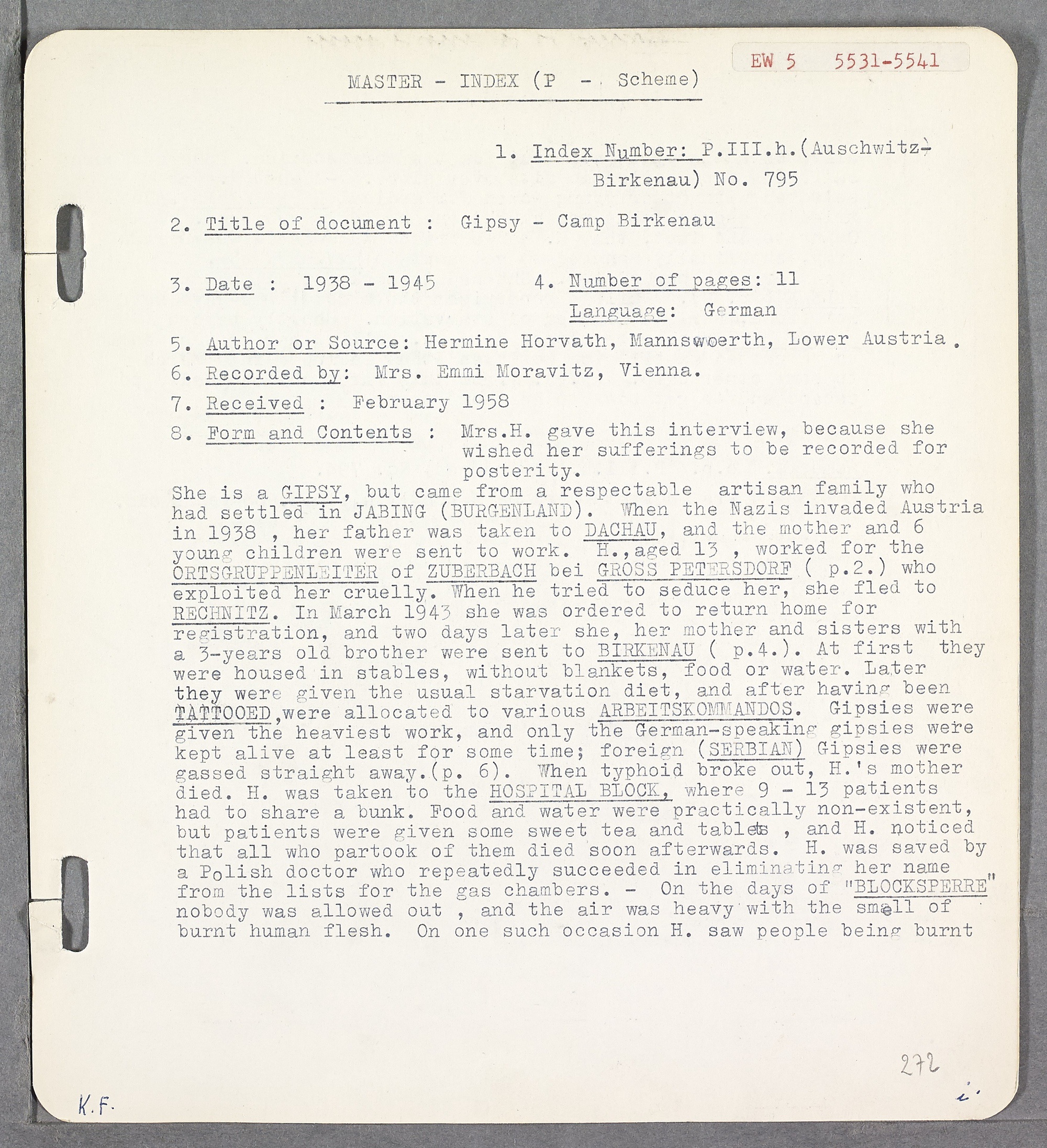
During the 1950s, researchers at The Wiener Holocaust Library gathered over 1,000 accounts from eyewitnesses to Nazi persecution and genocide.
In this report Hermine Horvath, an Austrian Sinti woman, recounts her experiences of the German takeover of Austia, detailing sexual violence whilst in forced labour service, her deportation to Auschwitz and undertaking slave labour at Ravensbruck.

After the war, millions of people were displaced, including large numbers of children. This photograph shows an anonymous young boy found alone in Berlin after the war. The International Tracing Service (ITS) made huge efforts to find children lost or stolen during the Holocaust, and also to identify foundlings and reunite them with their families where possible.
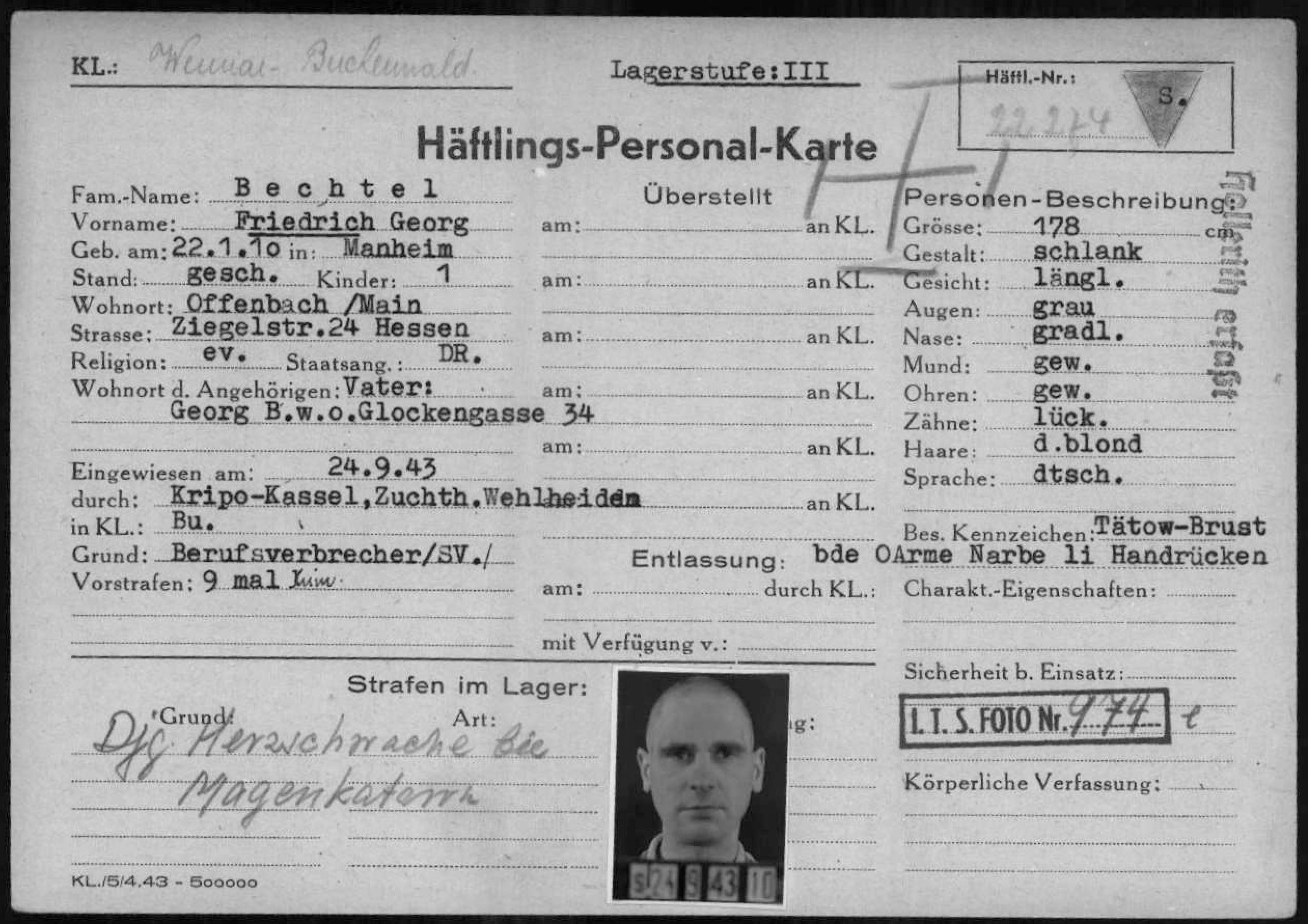
This is a Prisoner Registration Card from Buchenwald concentration camp used to record identifying details about a person incarcerated in the concentration camp system. This is Friedrich Bechtel's card containing brief biographical information, a physical description and photograph, and information about his incarceration.


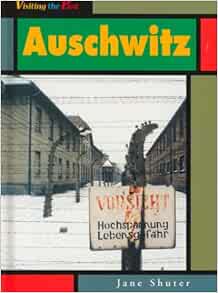 Auschwitz
by
Auschwitz
by
 Auschwitz
by
Auschwitz
by
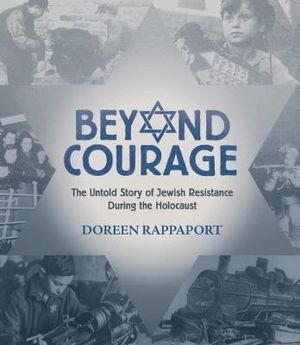 Beyond Courage : the untold story of Jewish resistance during the Holocaust
by
Beyond Courage : the untold story of Jewish resistance during the Holocaust
by
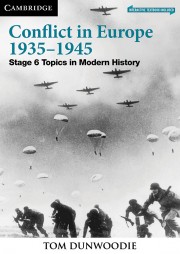 Conflict in Europe 1935-1945
by
Conflict in Europe 1935-1945
by
 The death camps
by
The death camps
by
 The diary of a young girl : the definitive edition
by
The diary of a young girl : the definitive edition
by
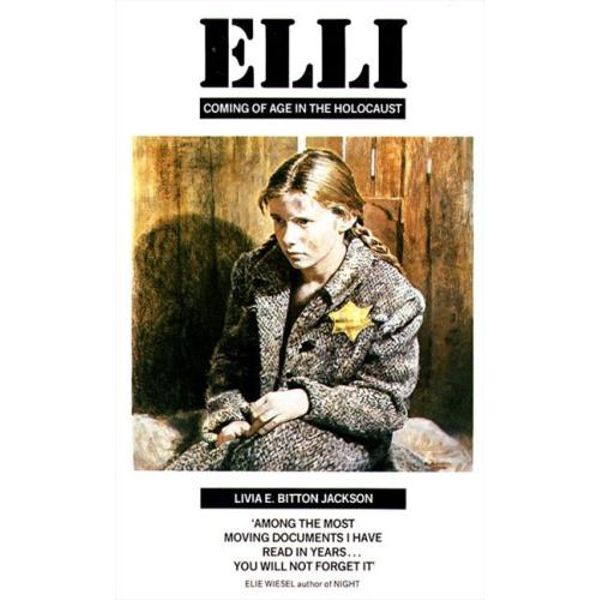 Elli : coming of age in the Holocaust
by
Elli : coming of age in the Holocaust
by
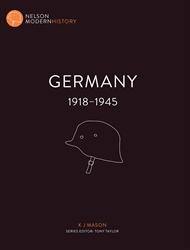 Germany 1918-1945
by
Germany 1918-1945
by
 Hitler and Germany
by
Hitler and Germany
by
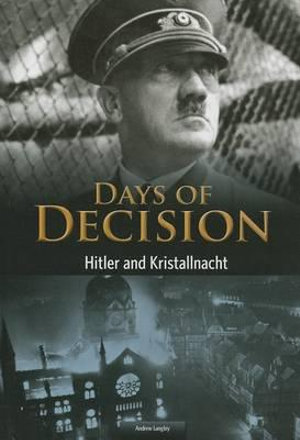 Hitler and Kristallnacht
by
Hitler and Kristallnacht
by
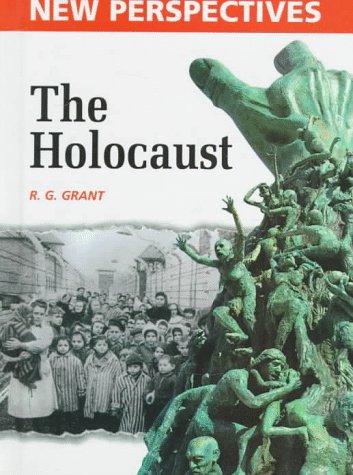 The Holocaust
by
The Holocaust
by
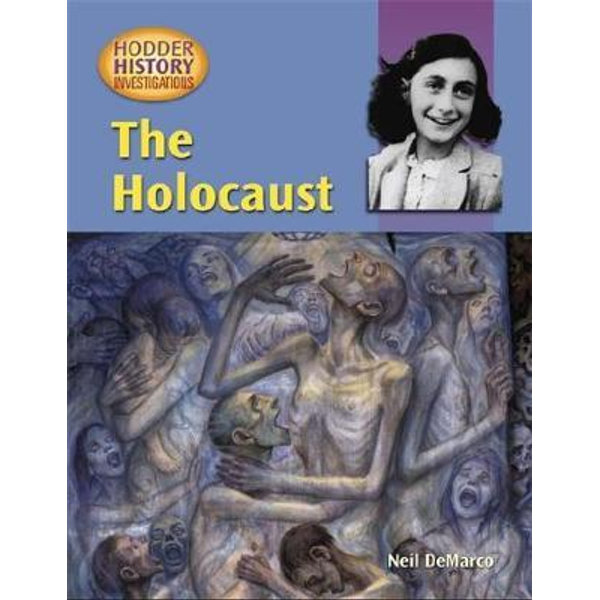 The Holocaust
by
The Holocaust
by
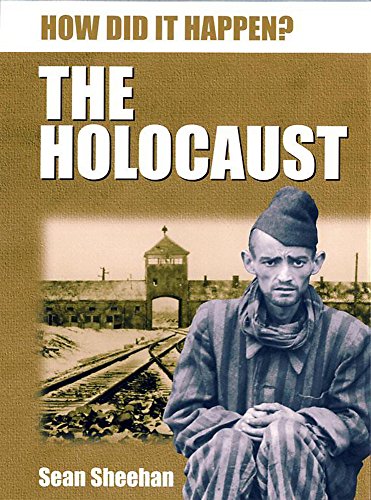 The Holocaust
by
The Holocaust
by
 The Holocaust
by
The Holocaust
by
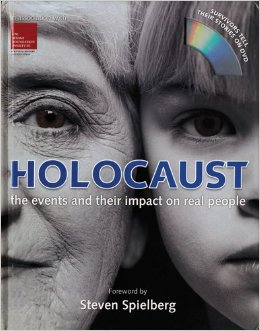 Holocaust the events and their impact on real people
by
Holocaust the events and their impact on real people
by
 Nazi Germany
by
Nazi Germany
by
 Reinhard Heydrich : hangman of theThird Reich
by
Reinhard Heydrich : hangman of theThird Reich
by
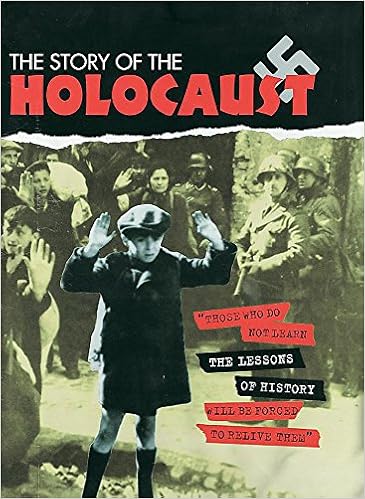 The story of the Holocaust
by
The story of the Holocaust
by
 We will not be silent : the White Rose student resistance movement that defied Adolf Hitler
by
We will not be silent : the White Rose student resistance movement that defied Adolf Hitler
by
 Why did the Holocaust happen?
by
Why did the Holocaust happen?
by